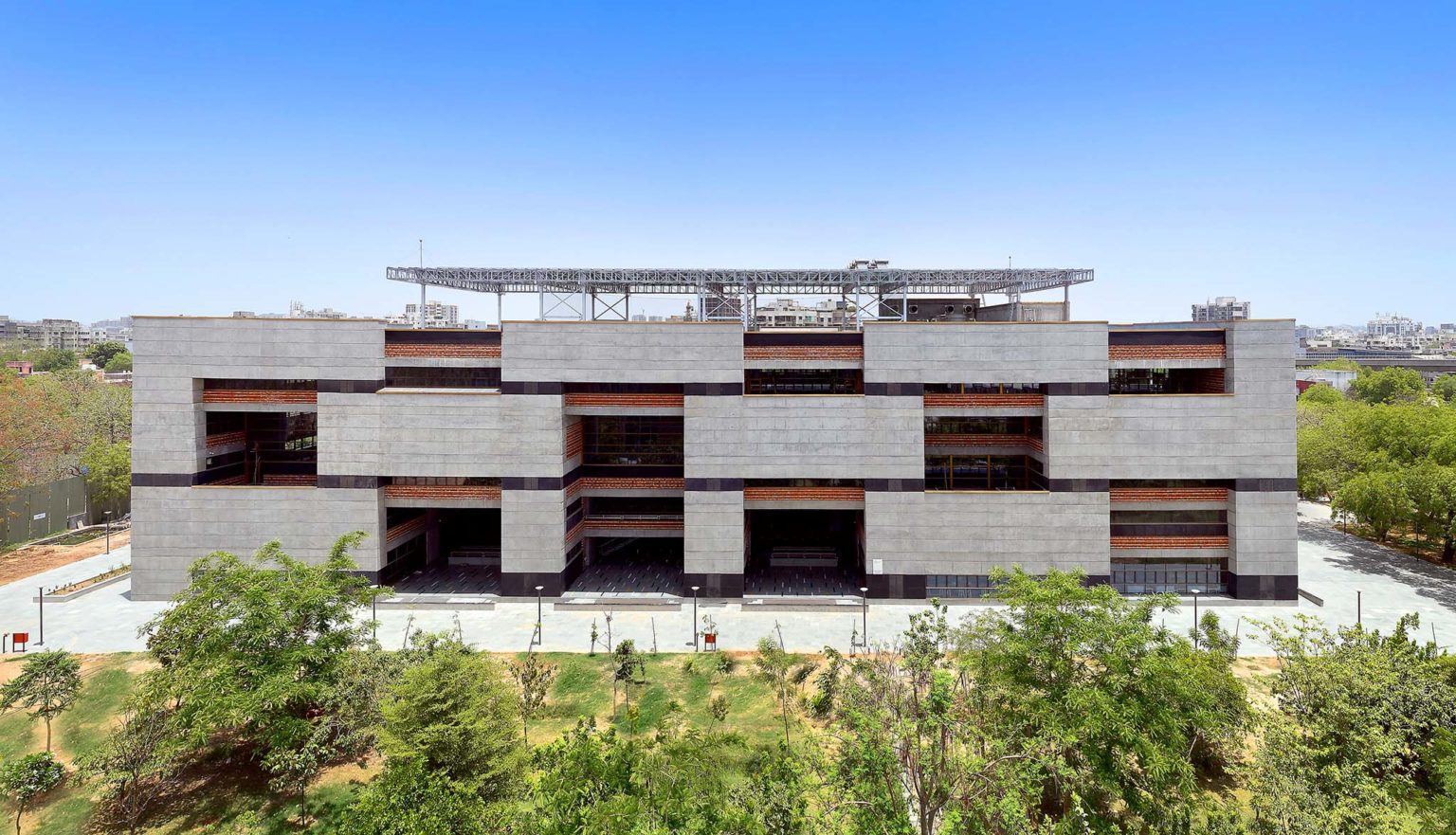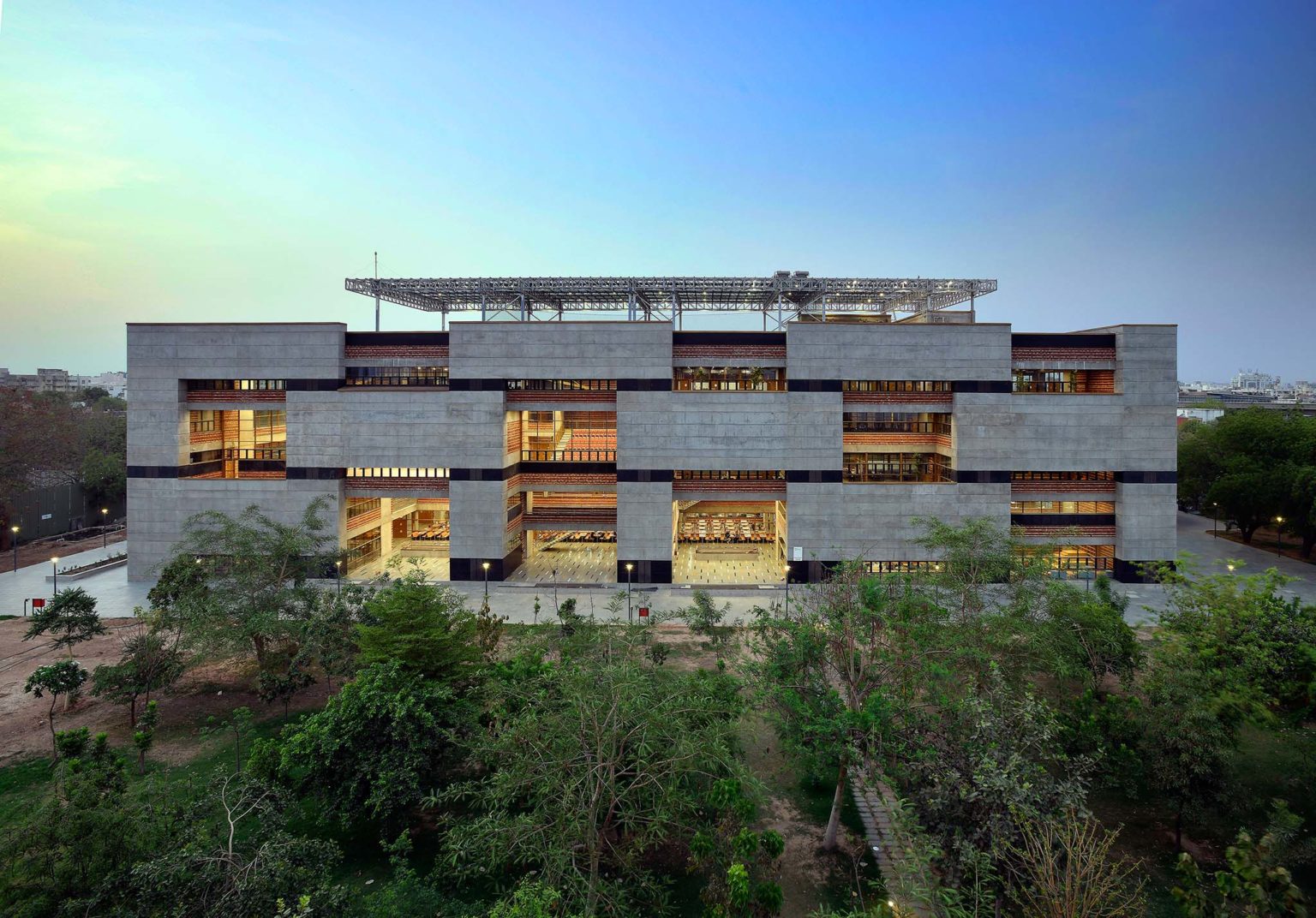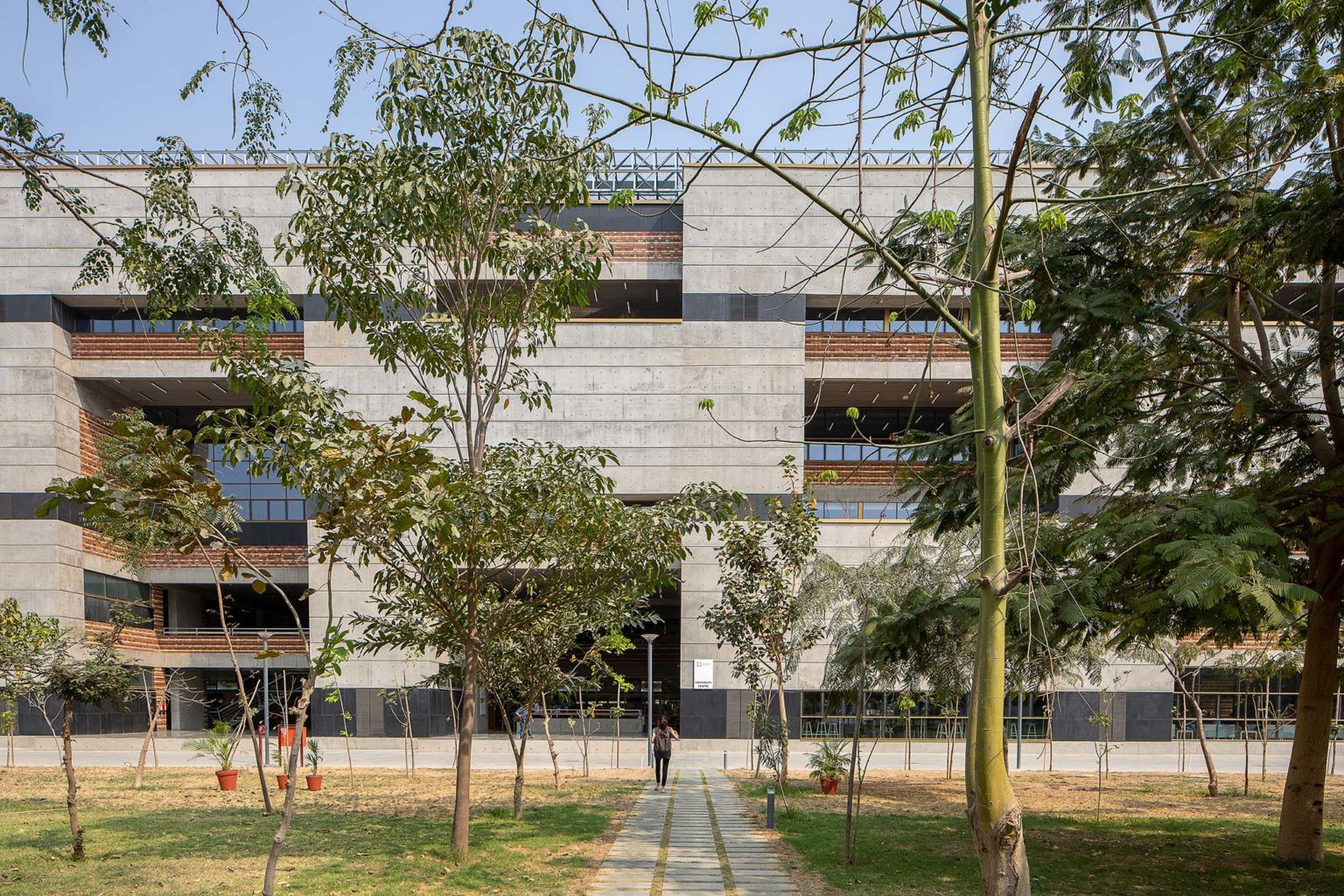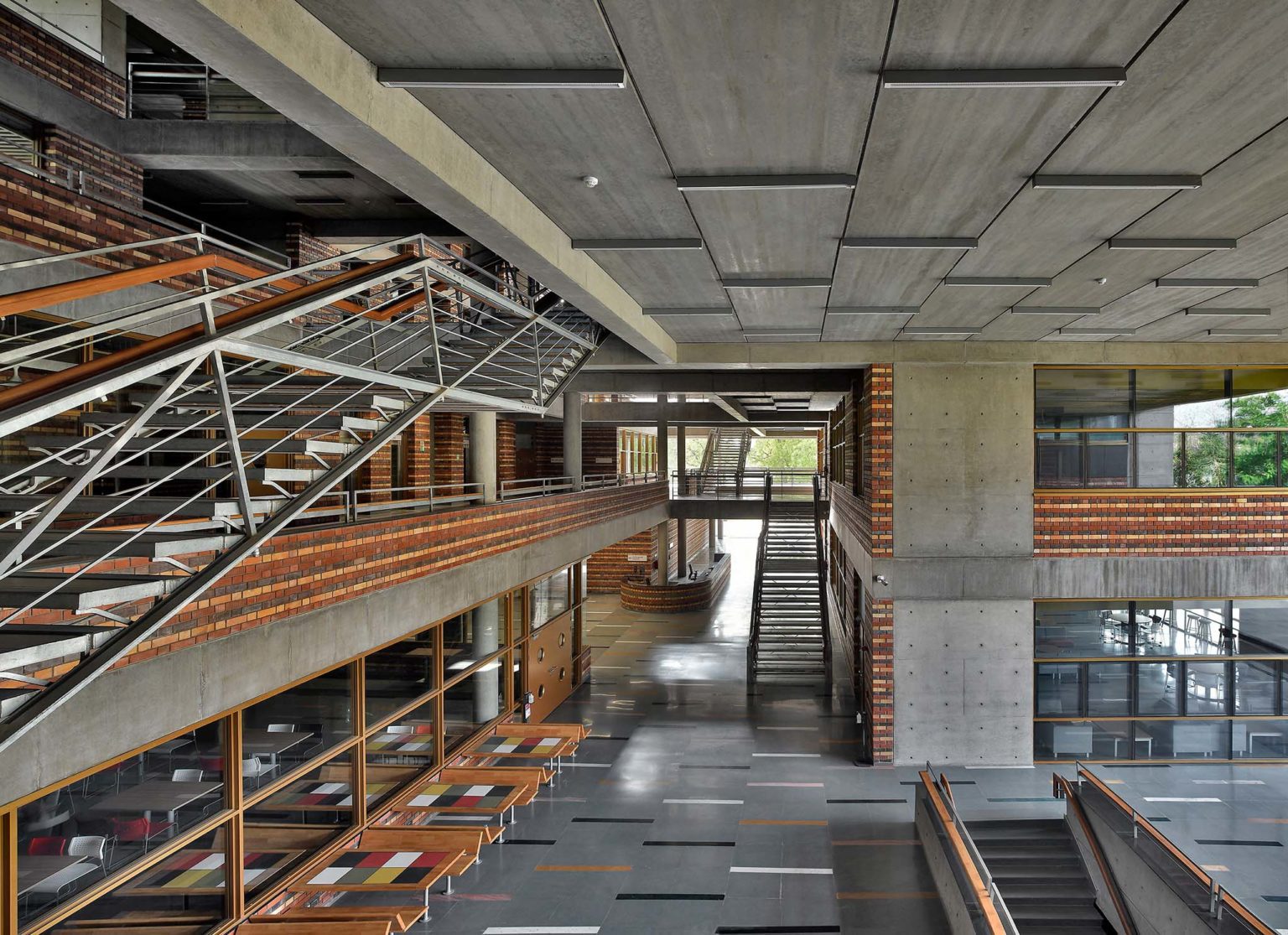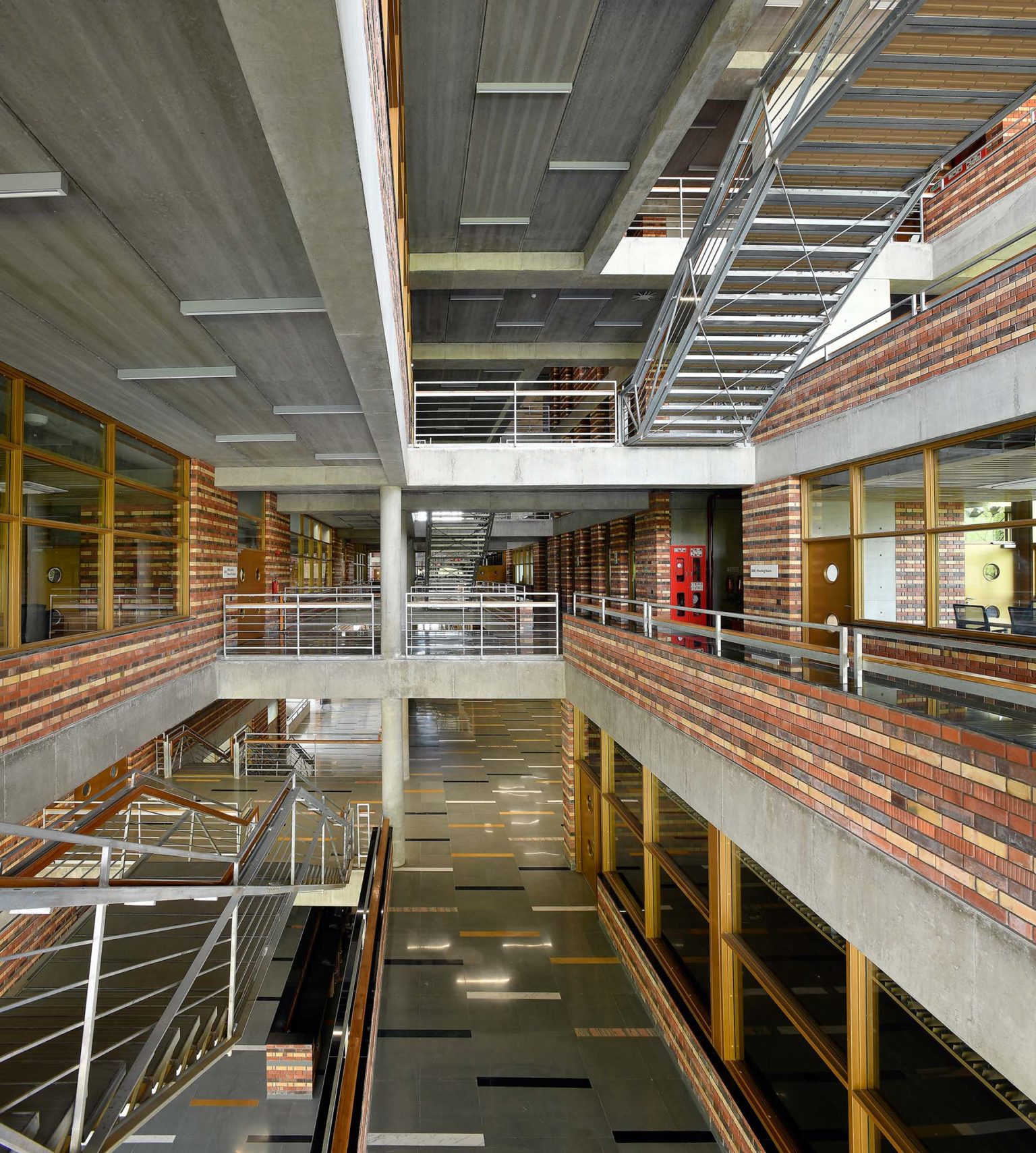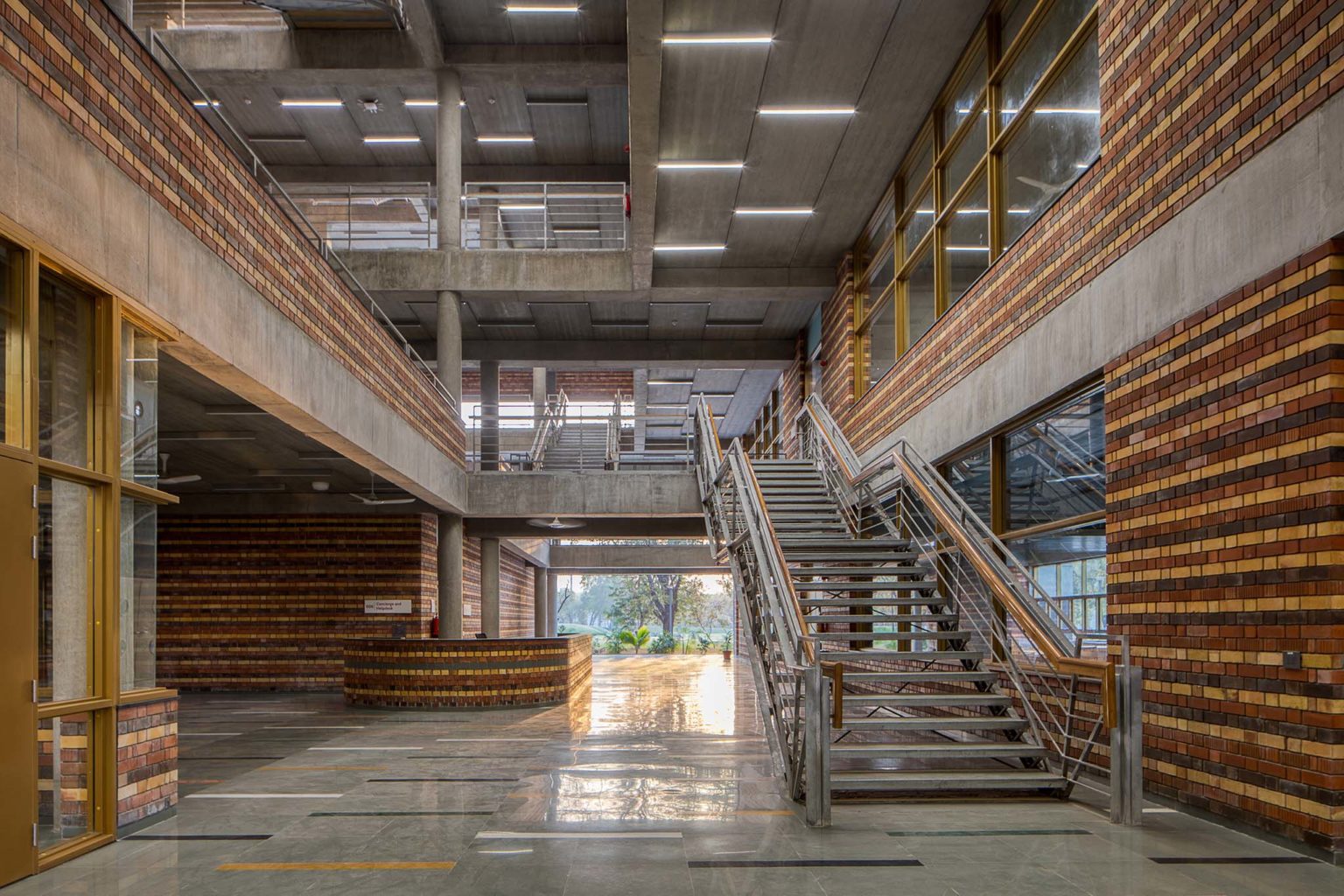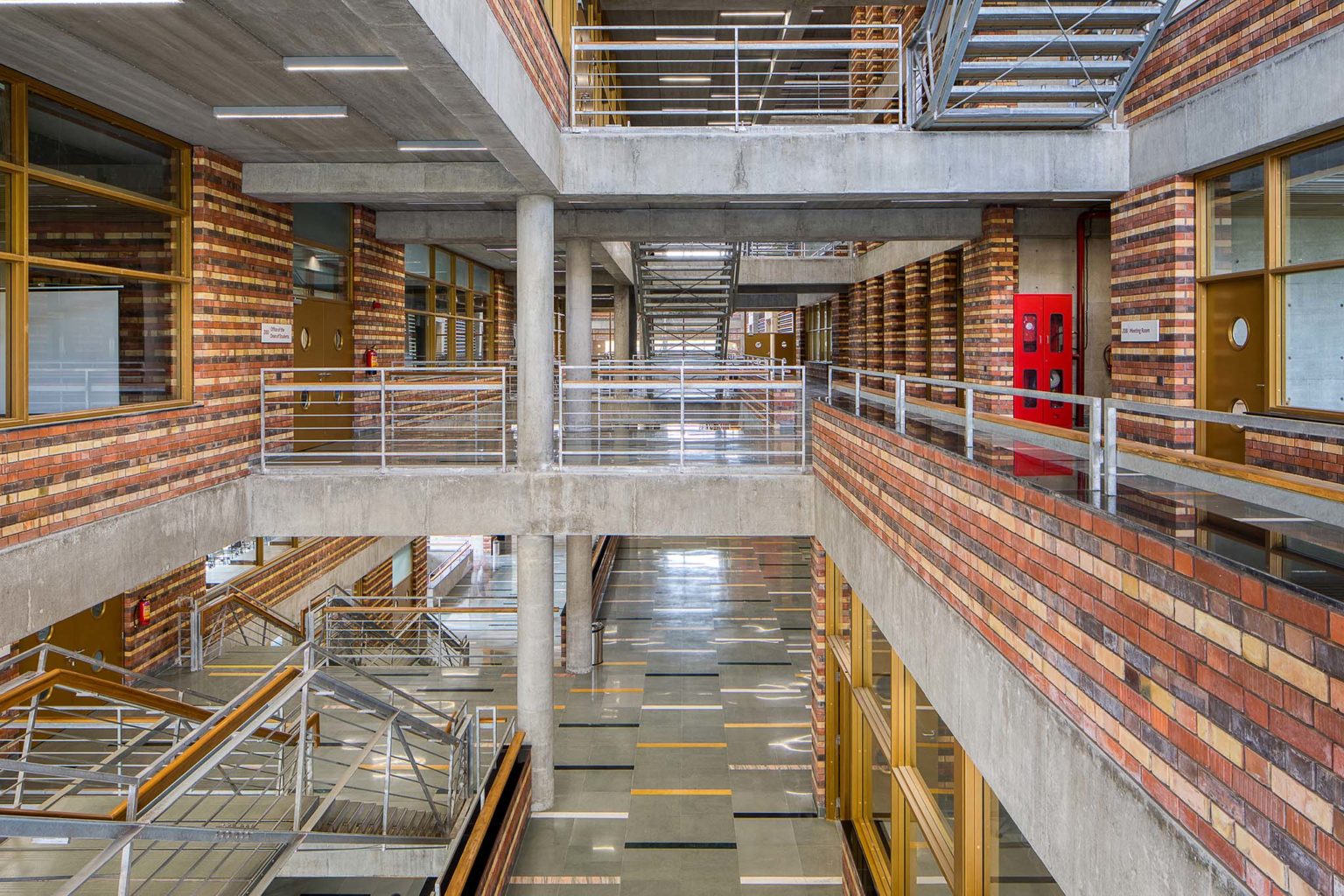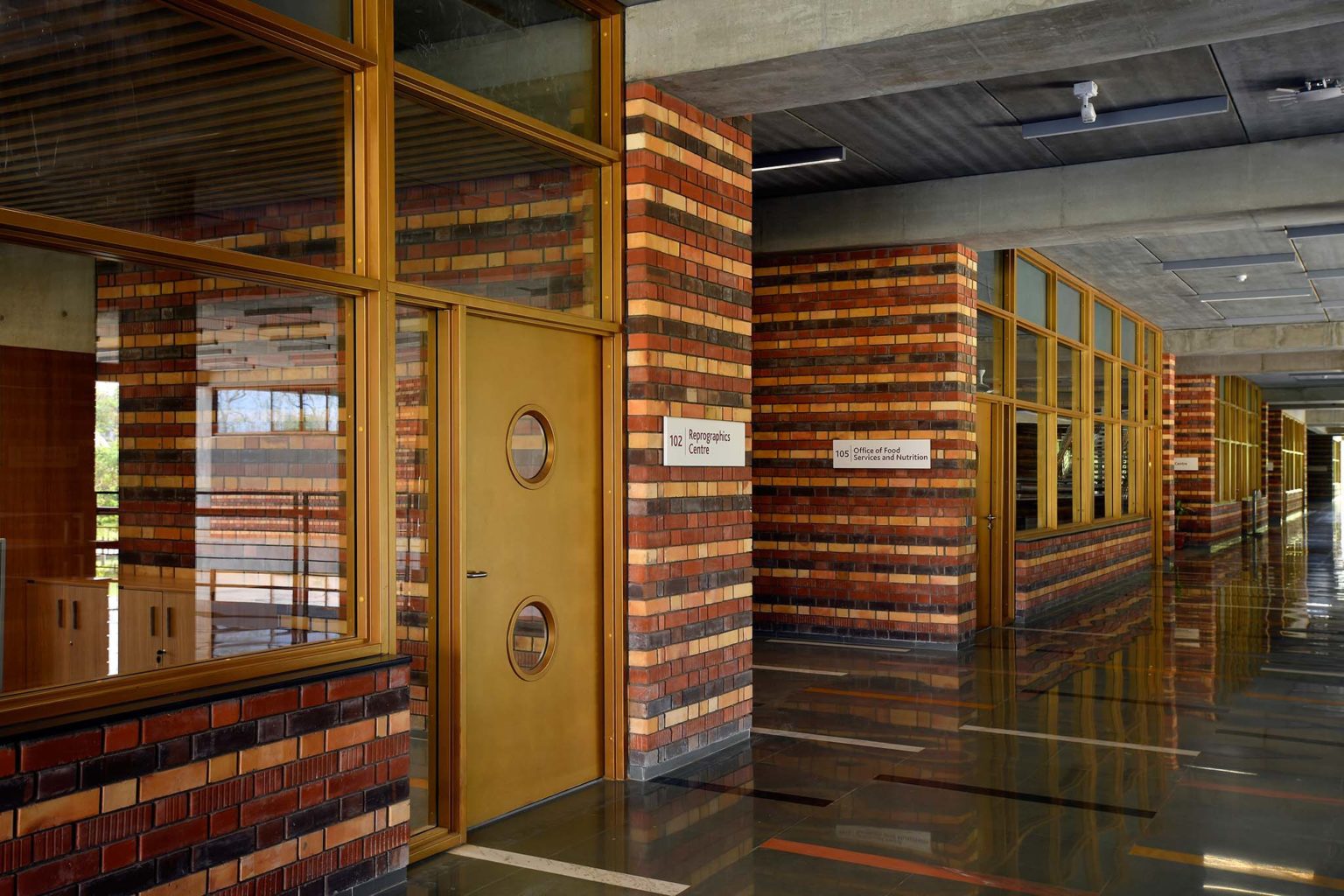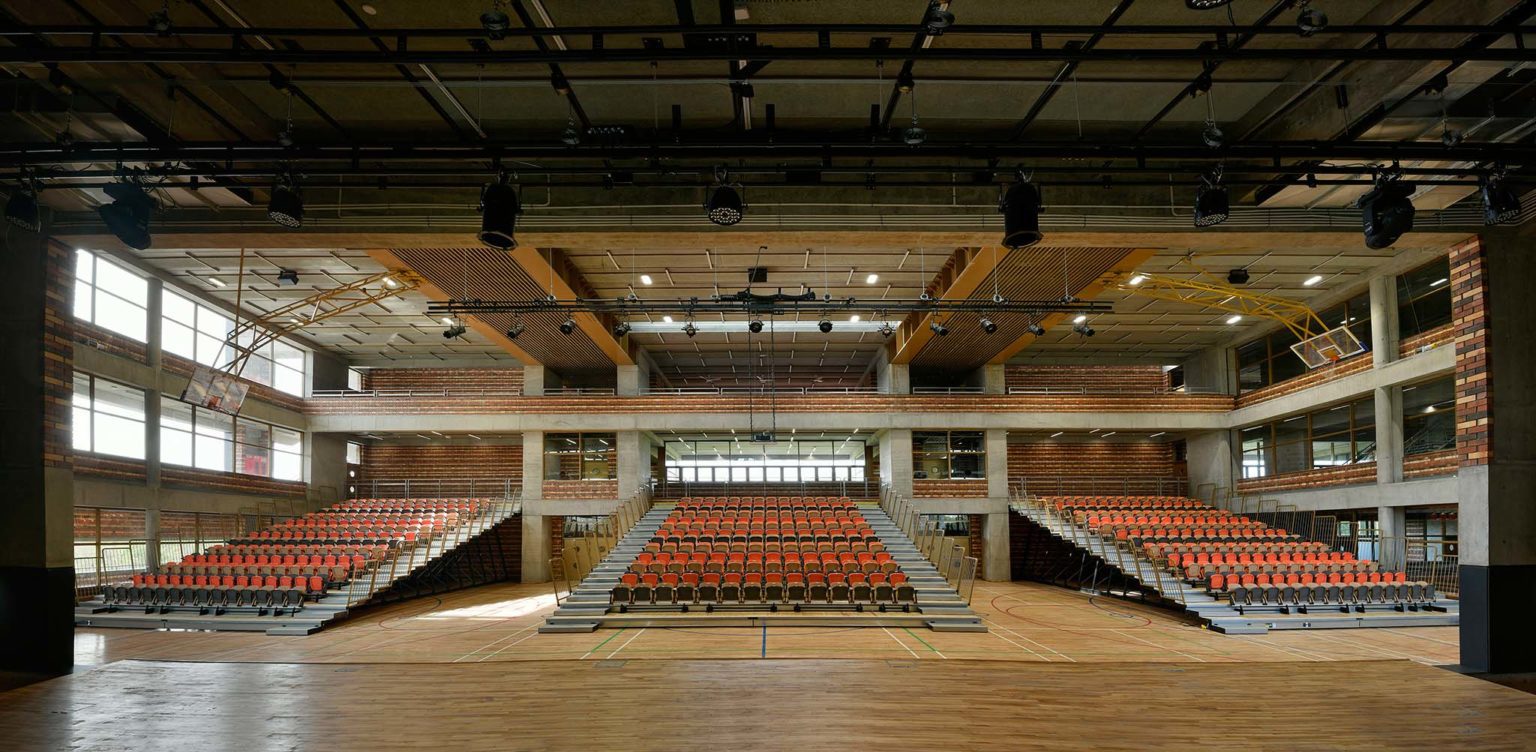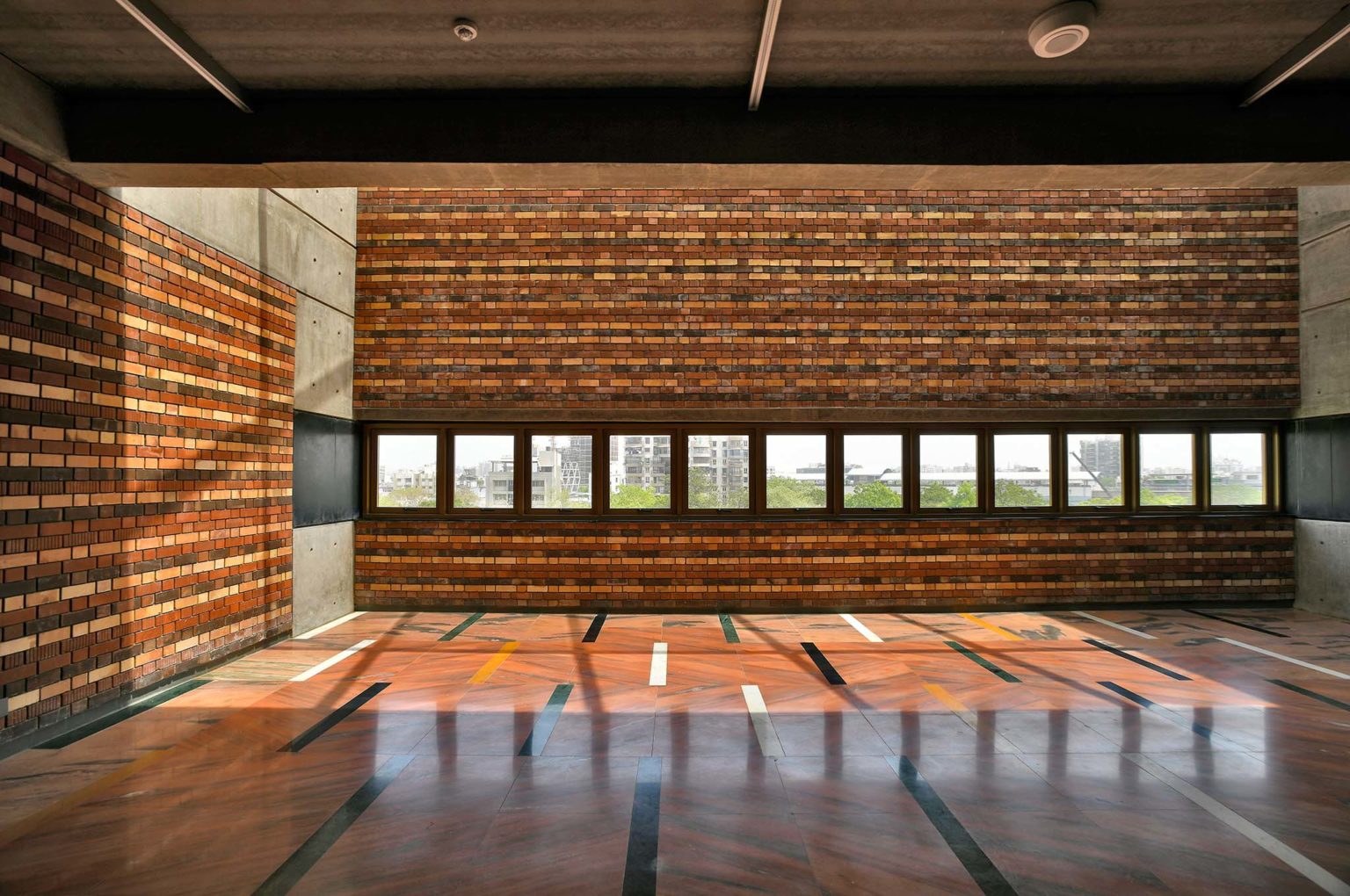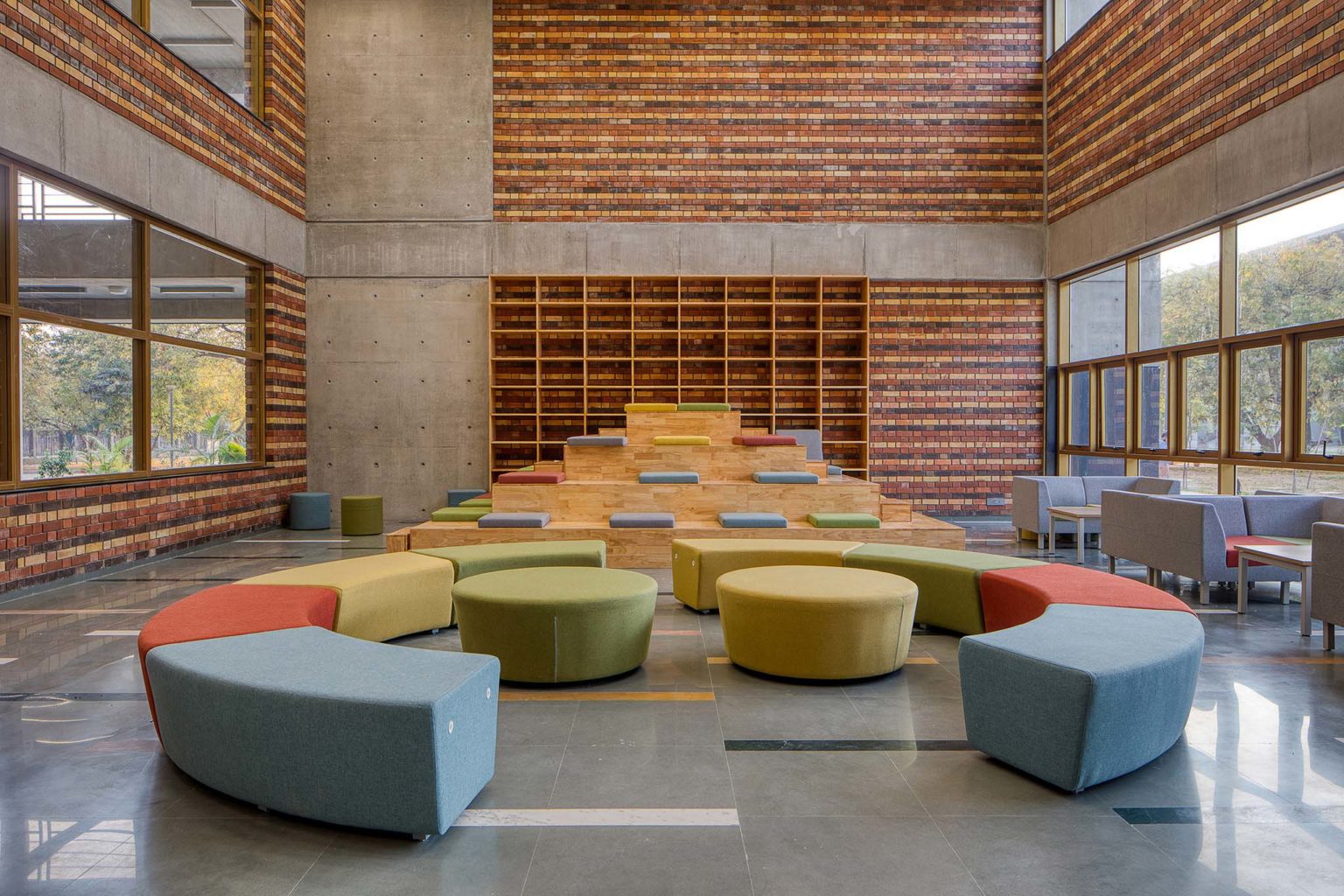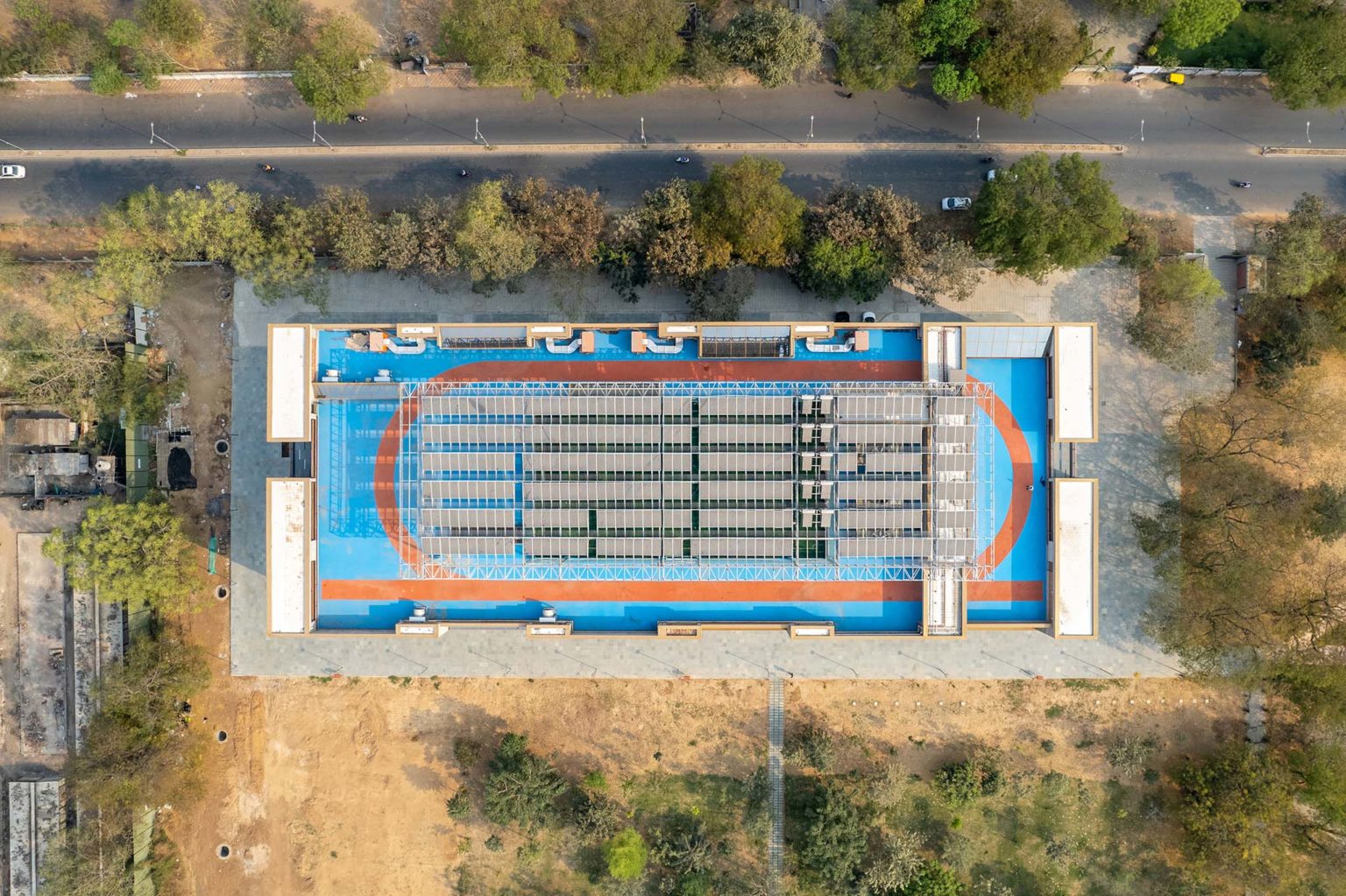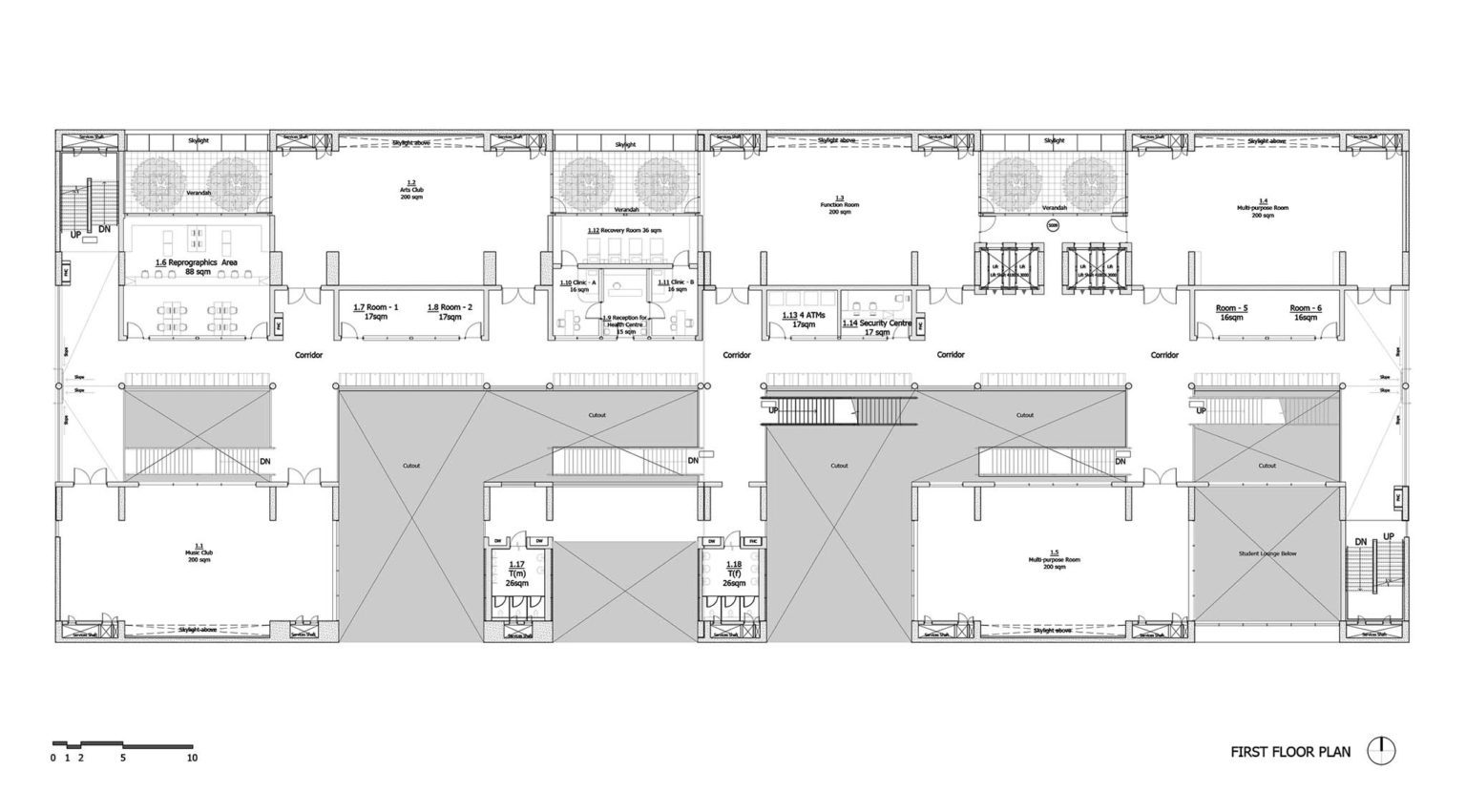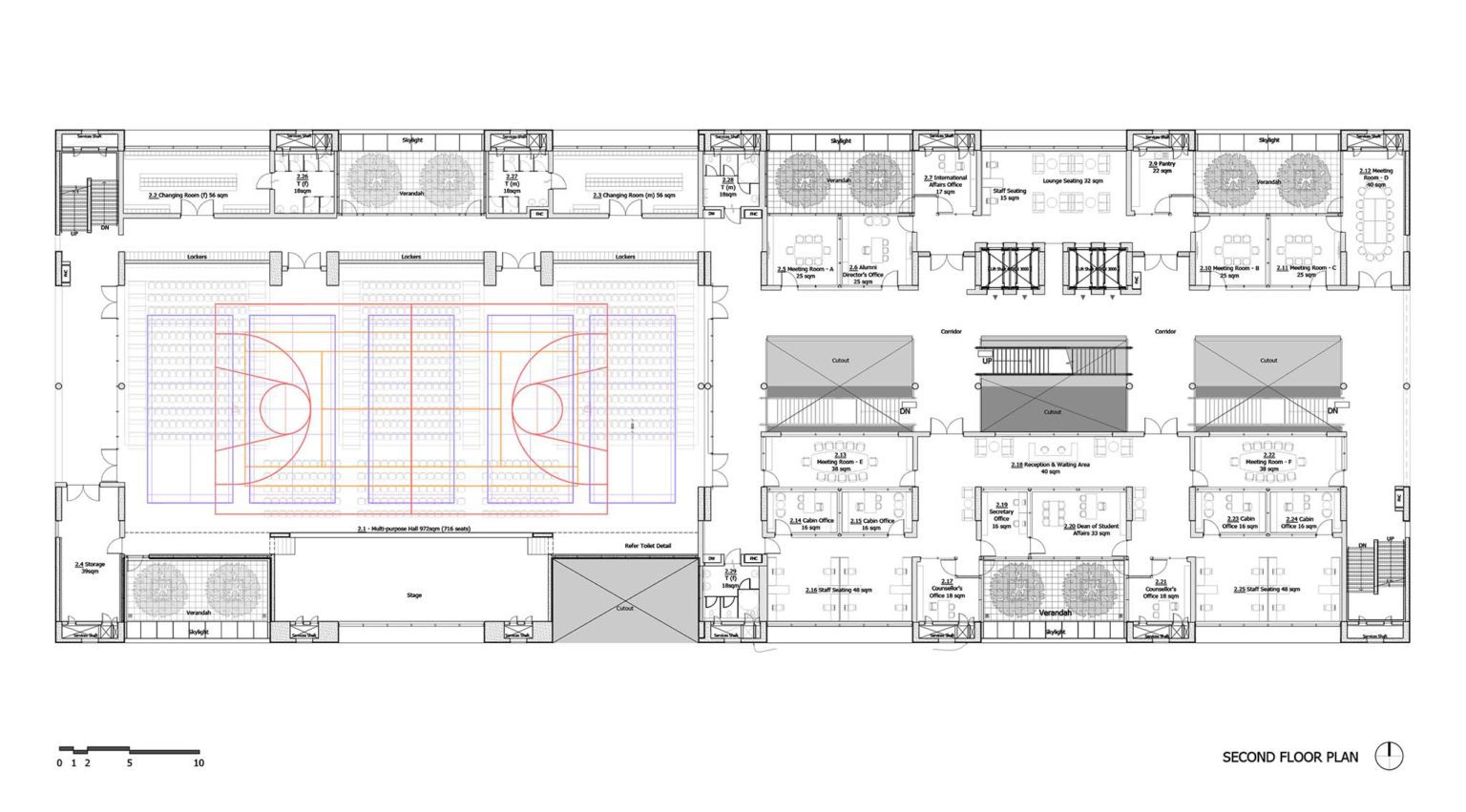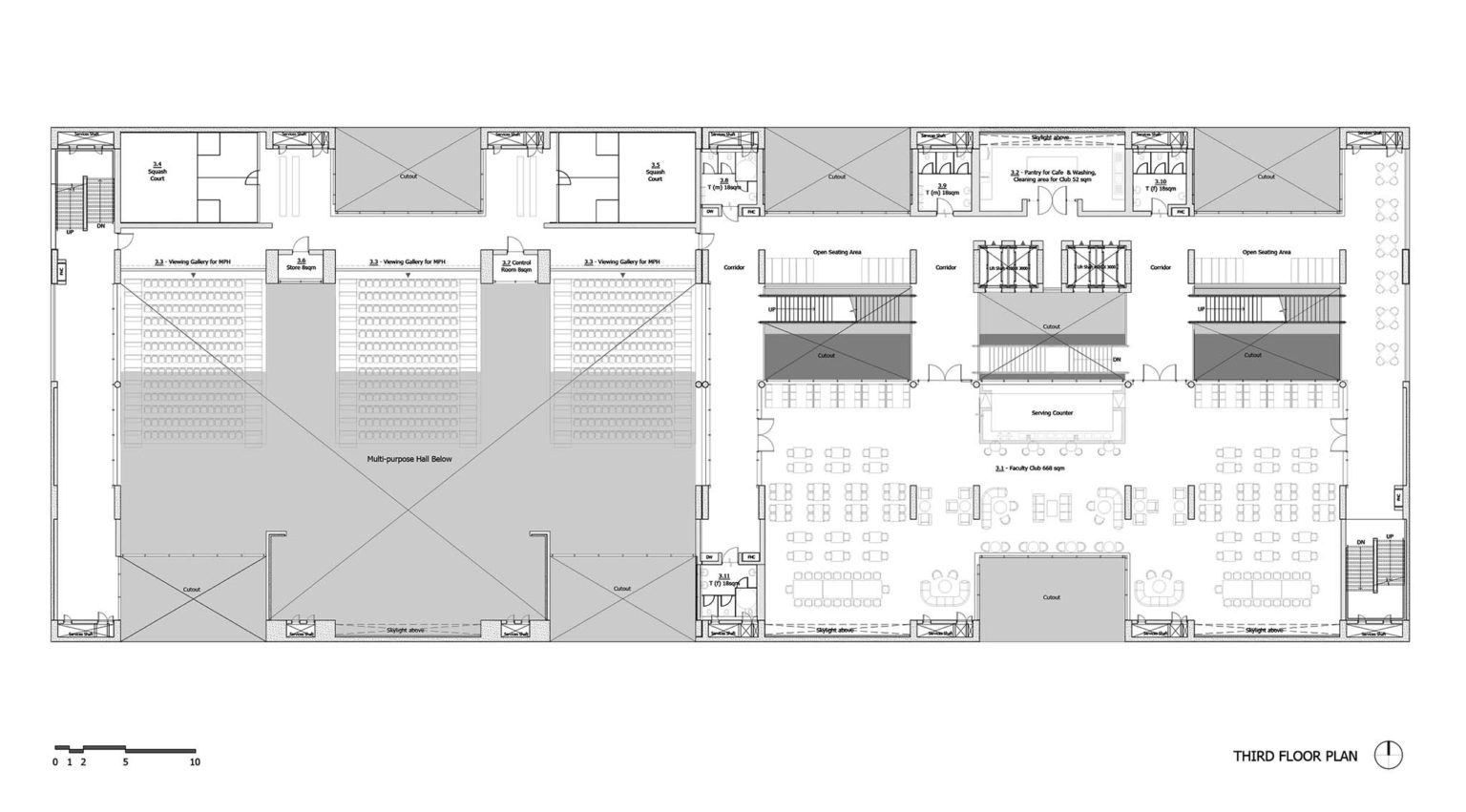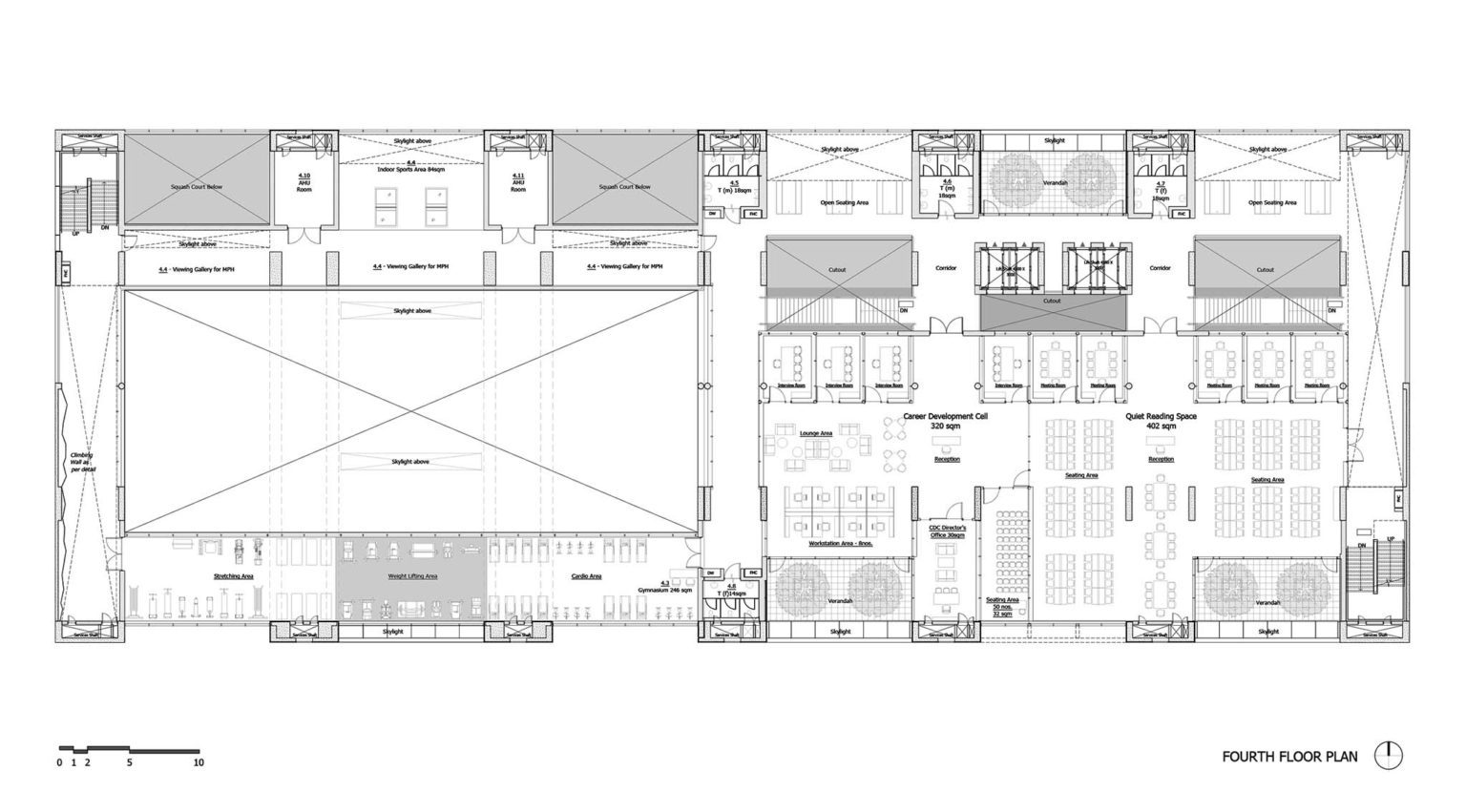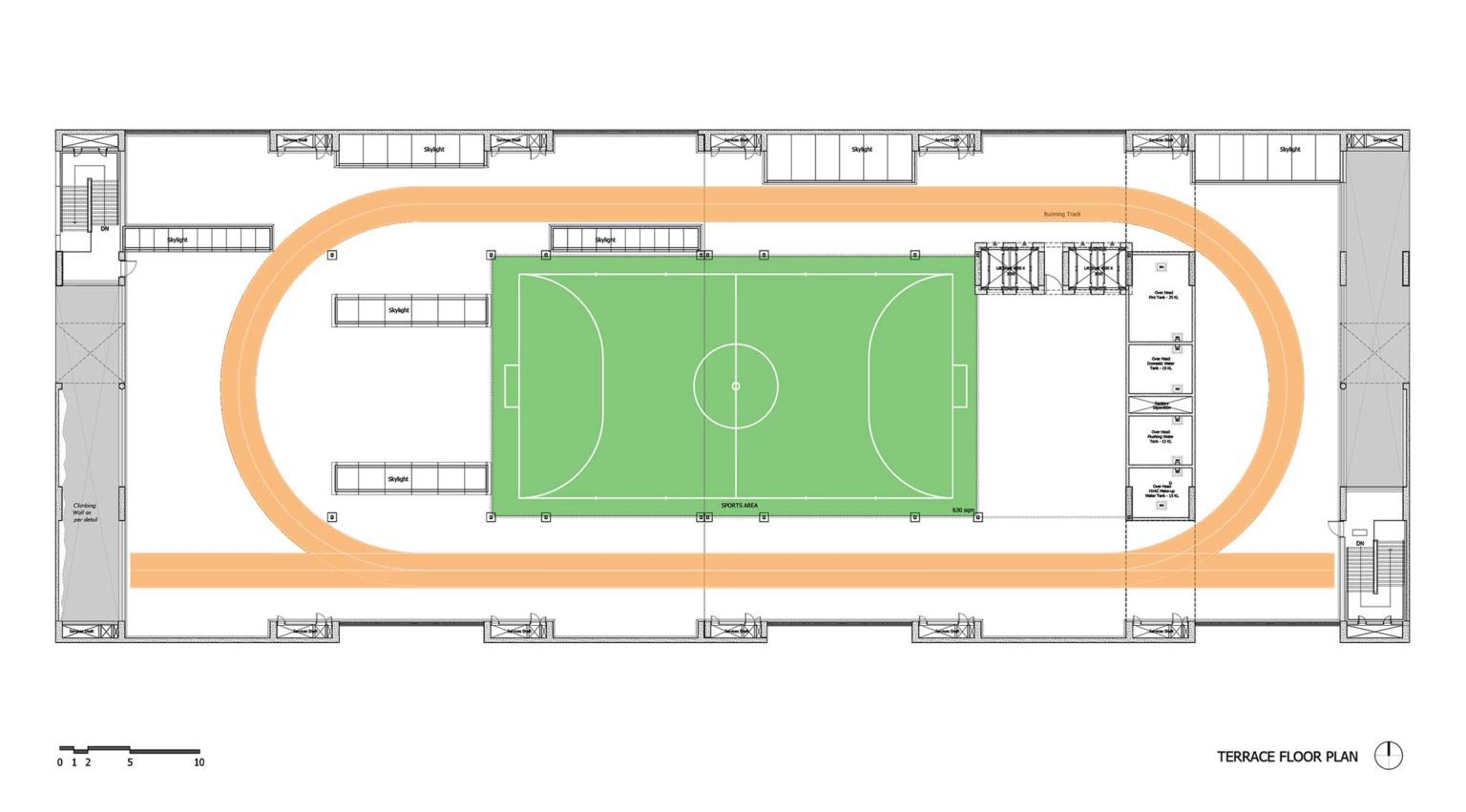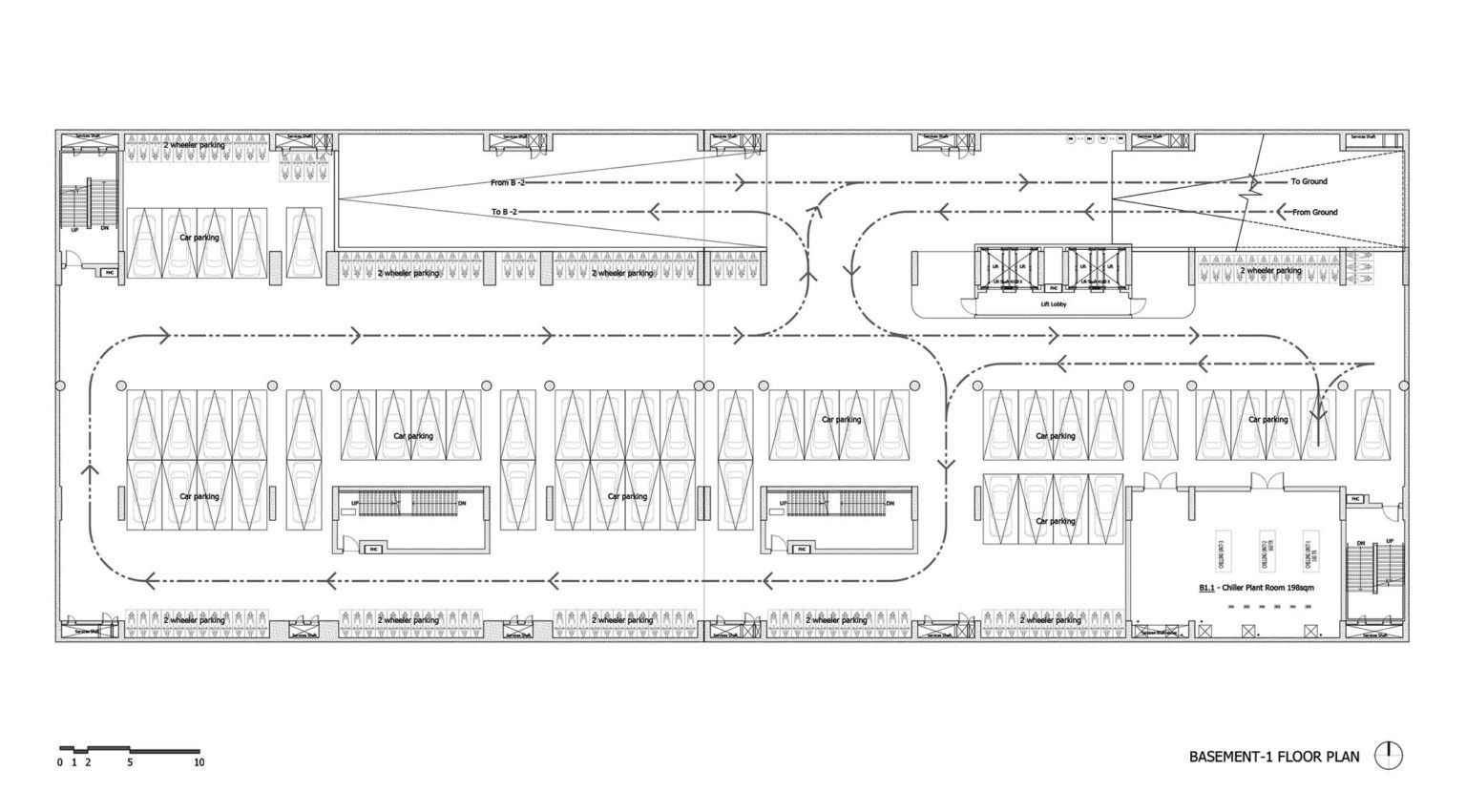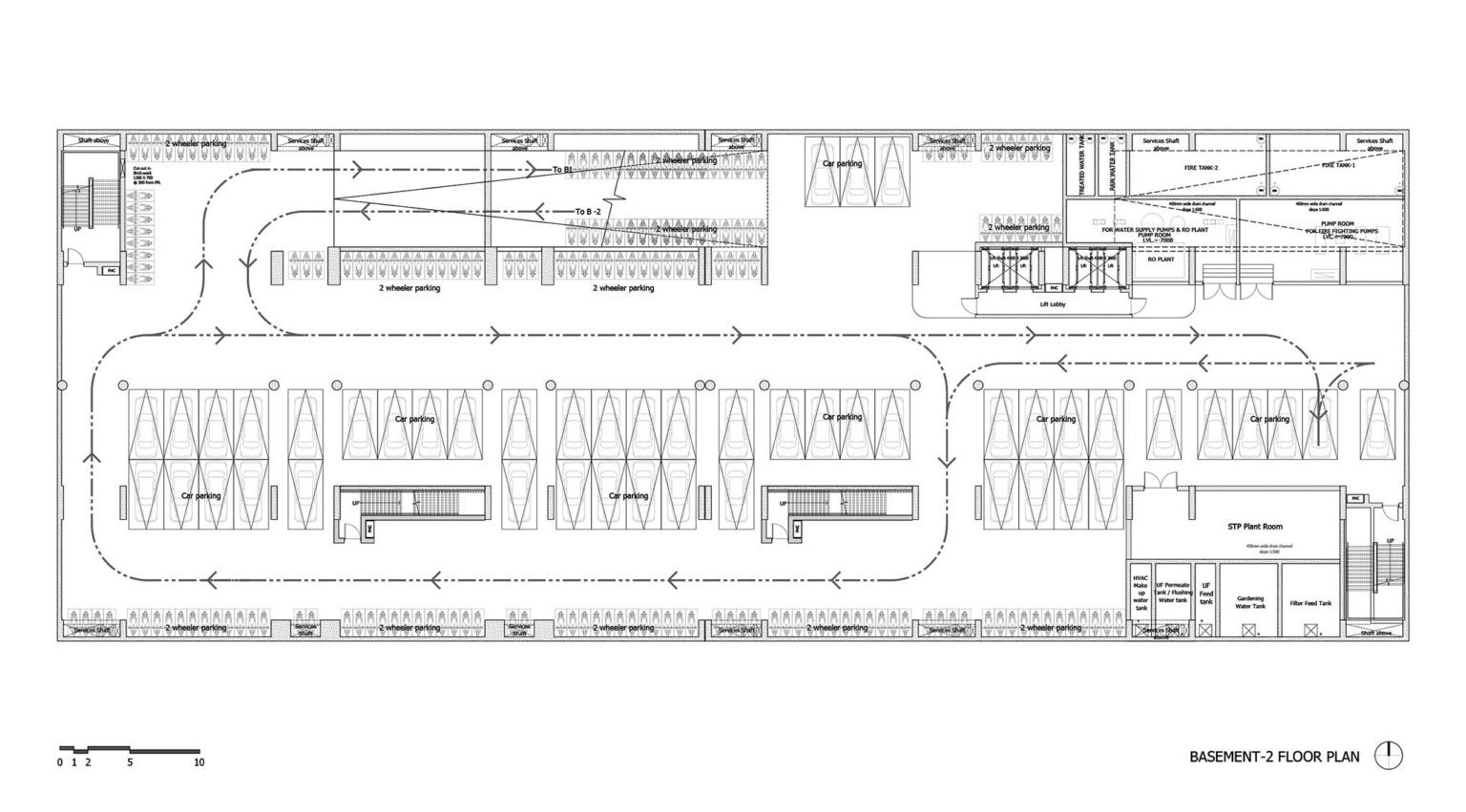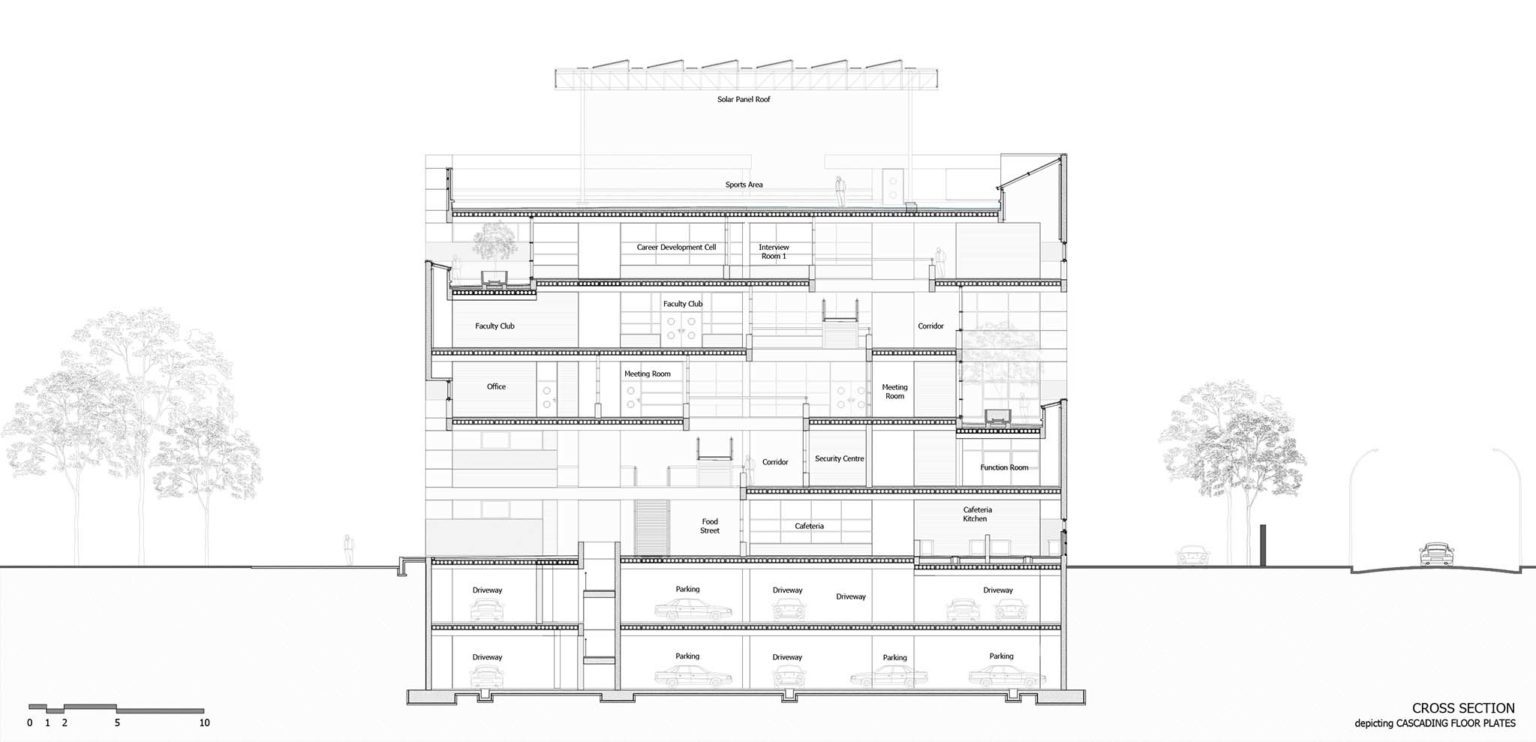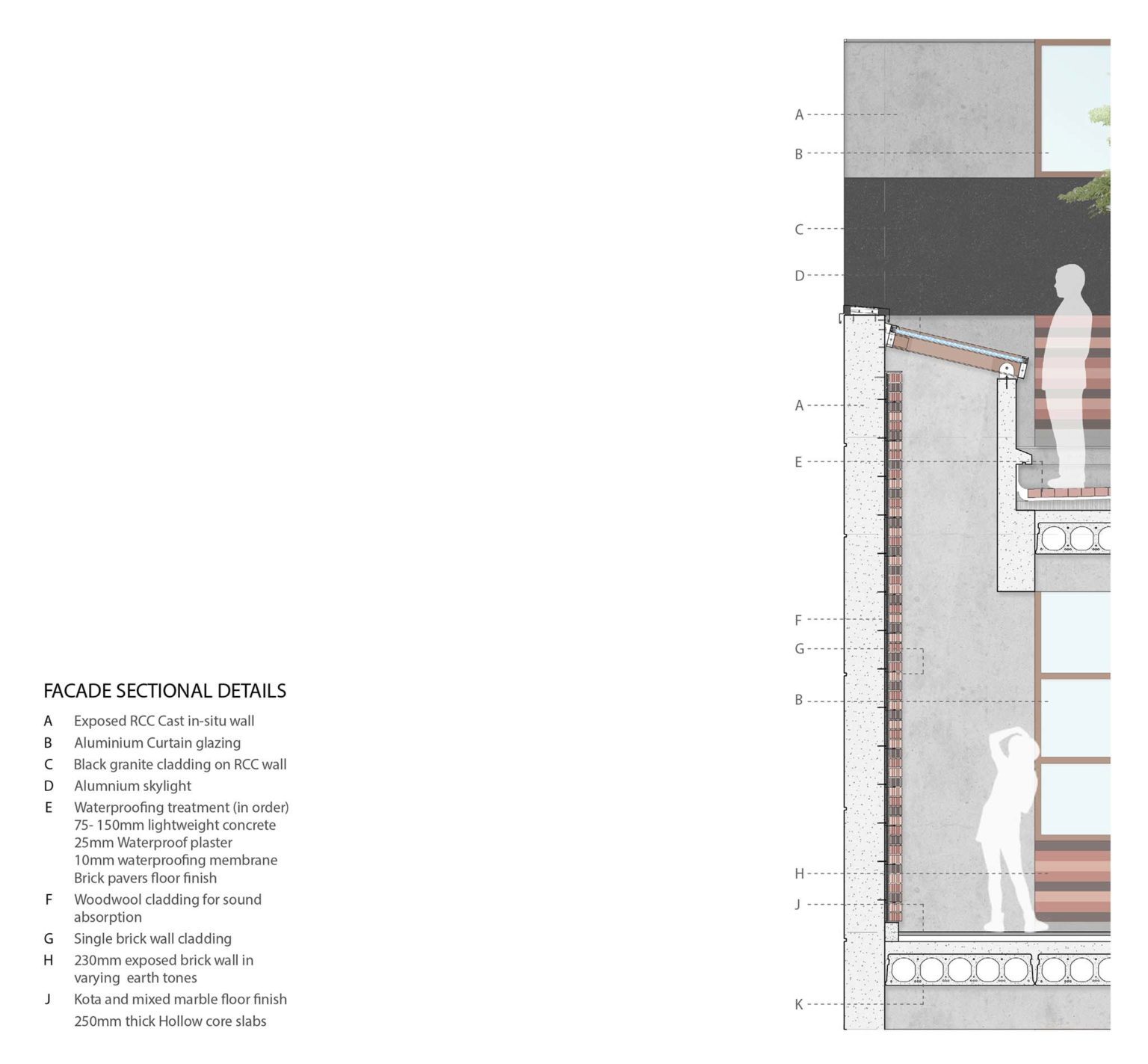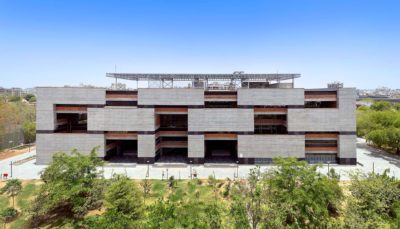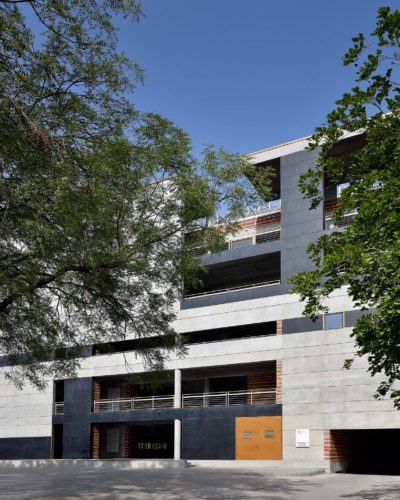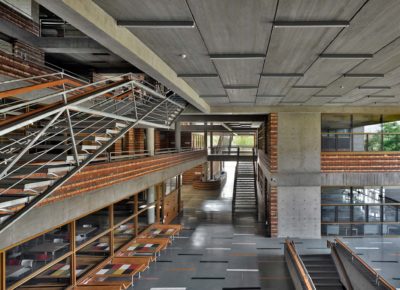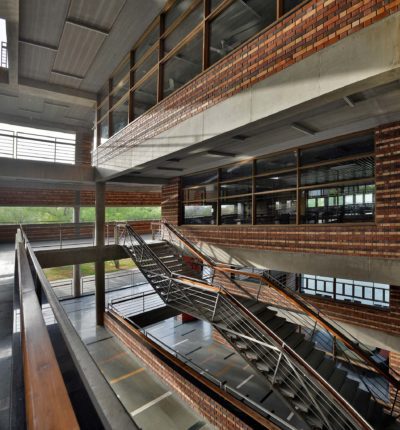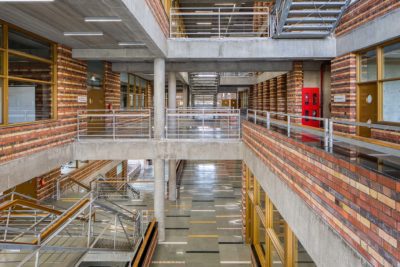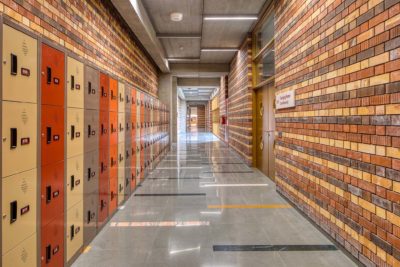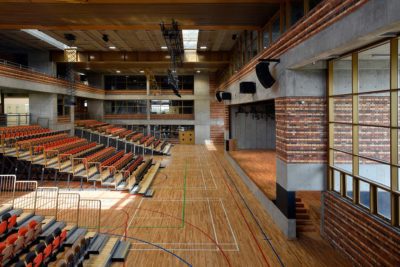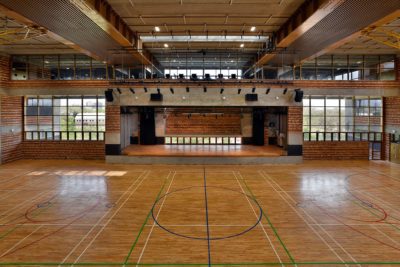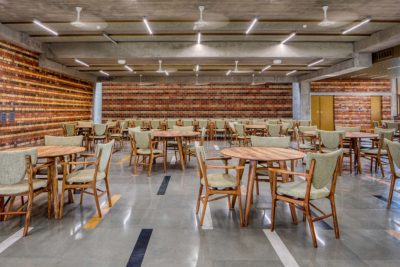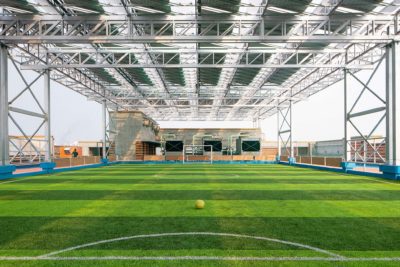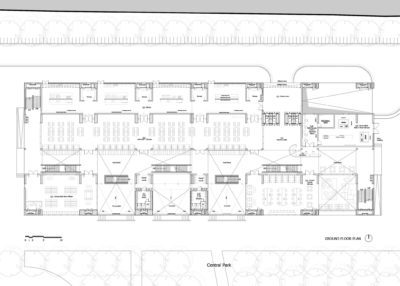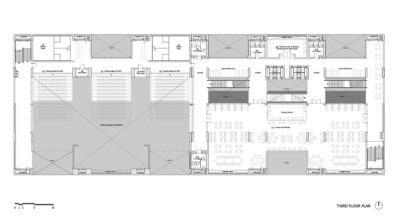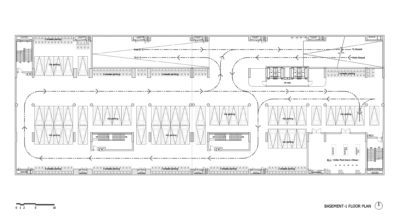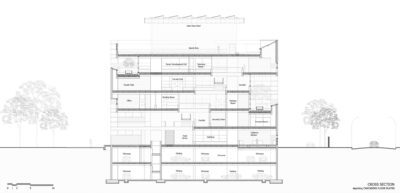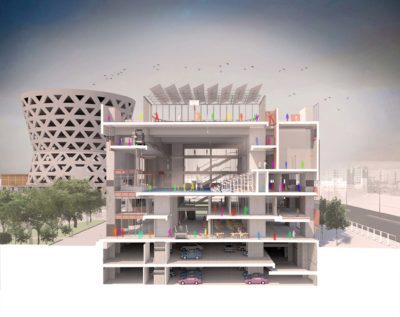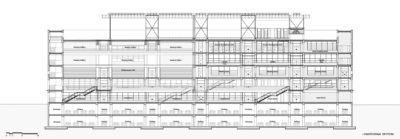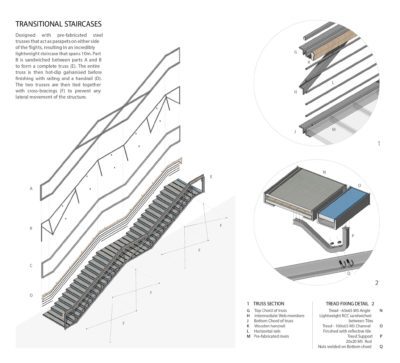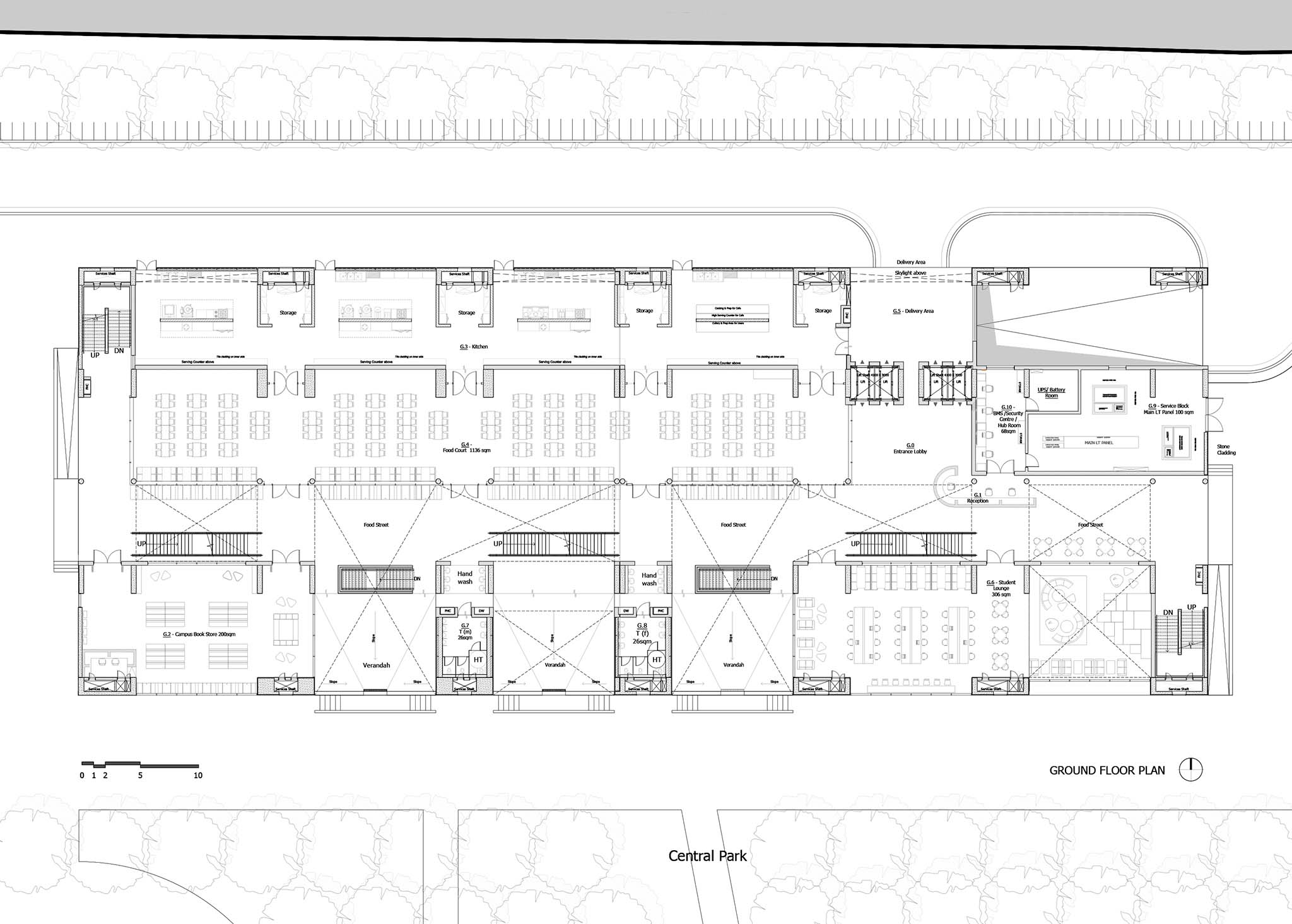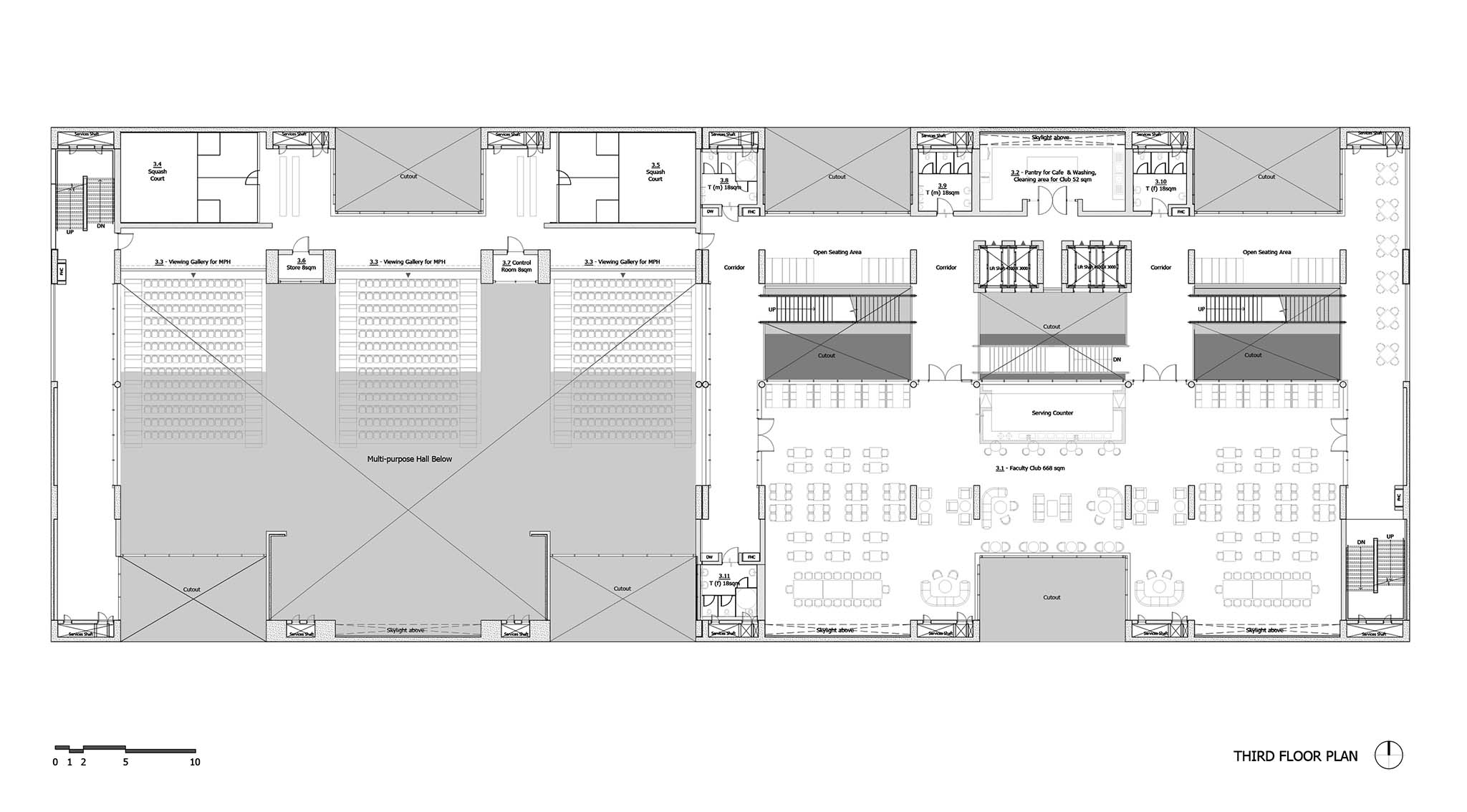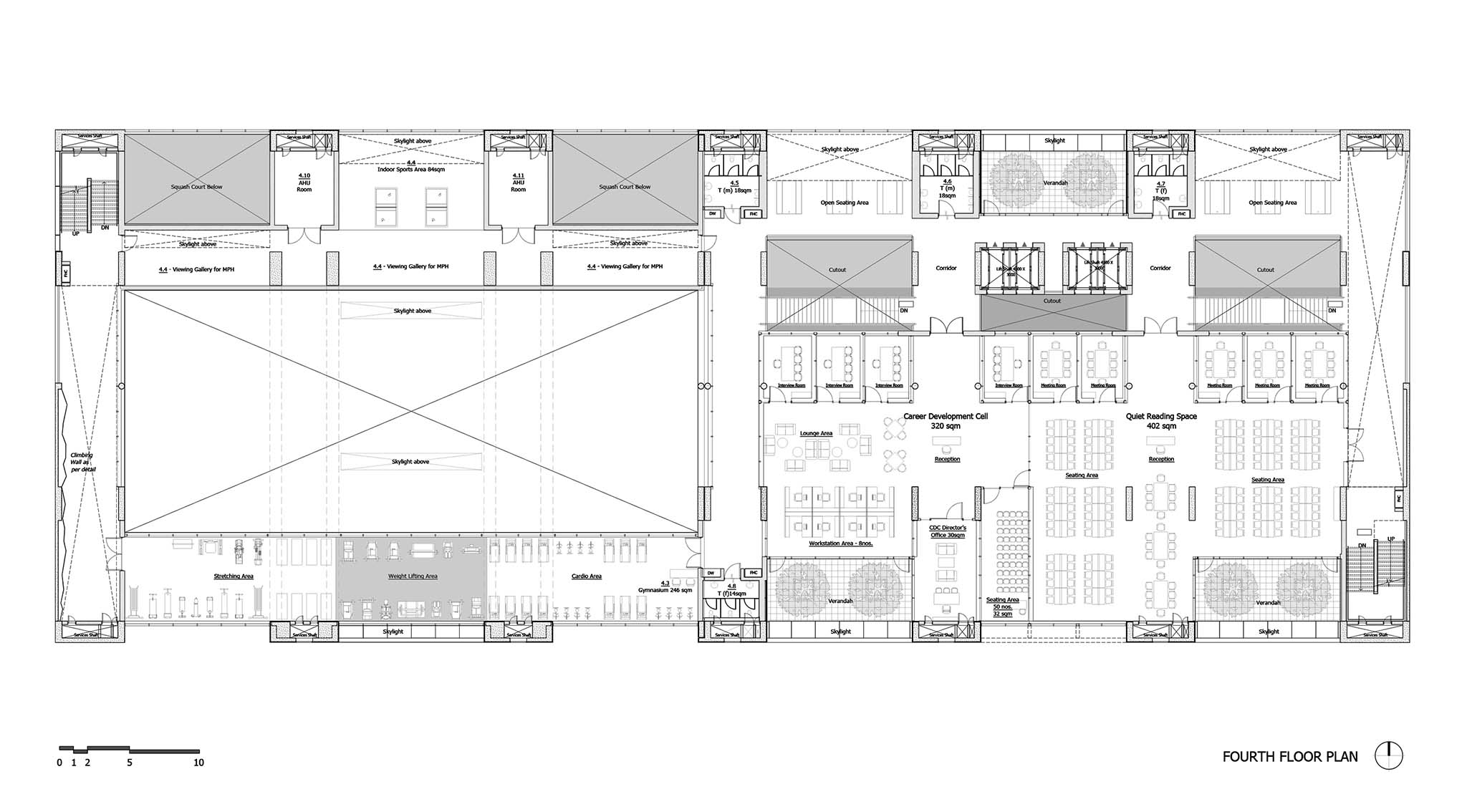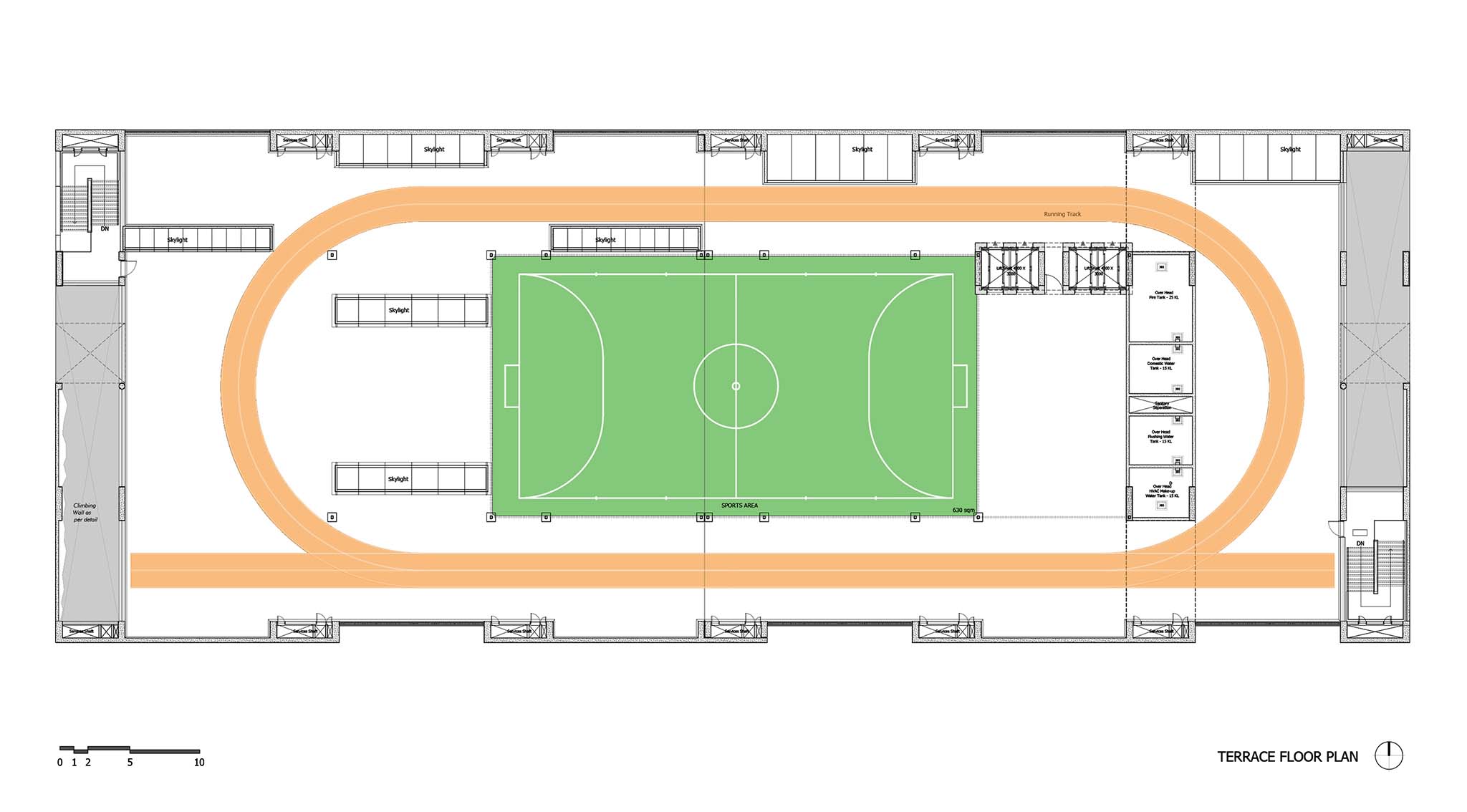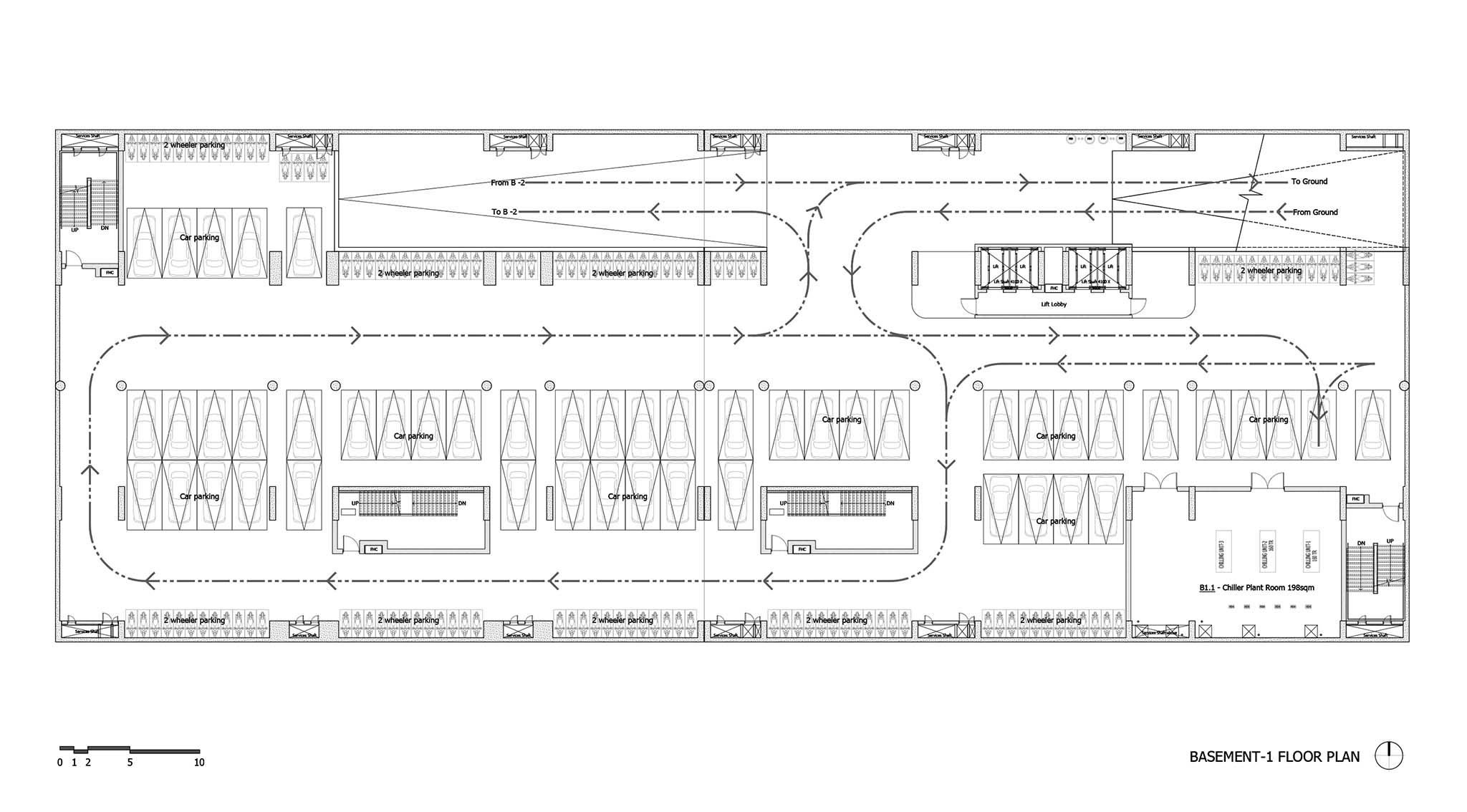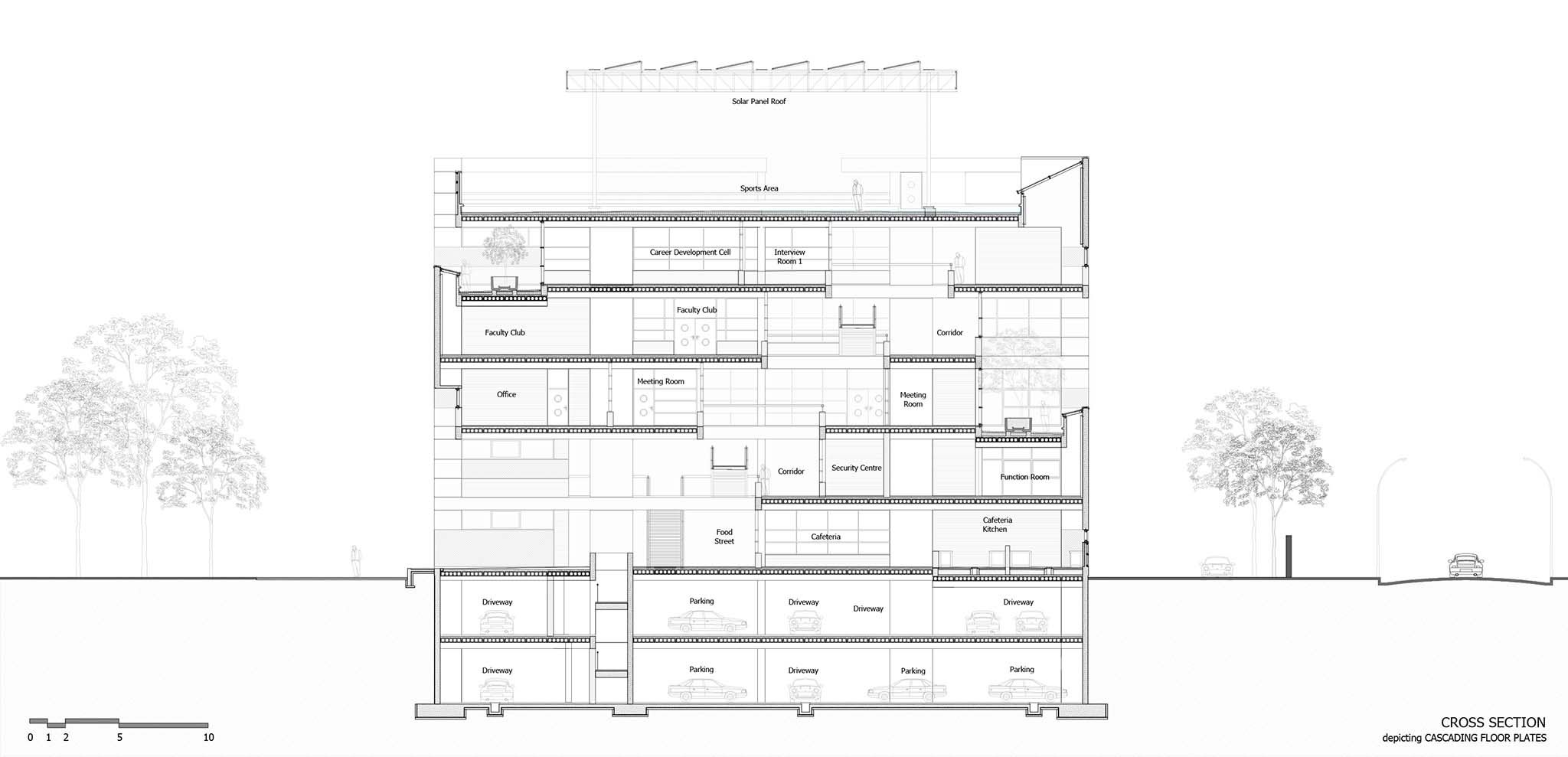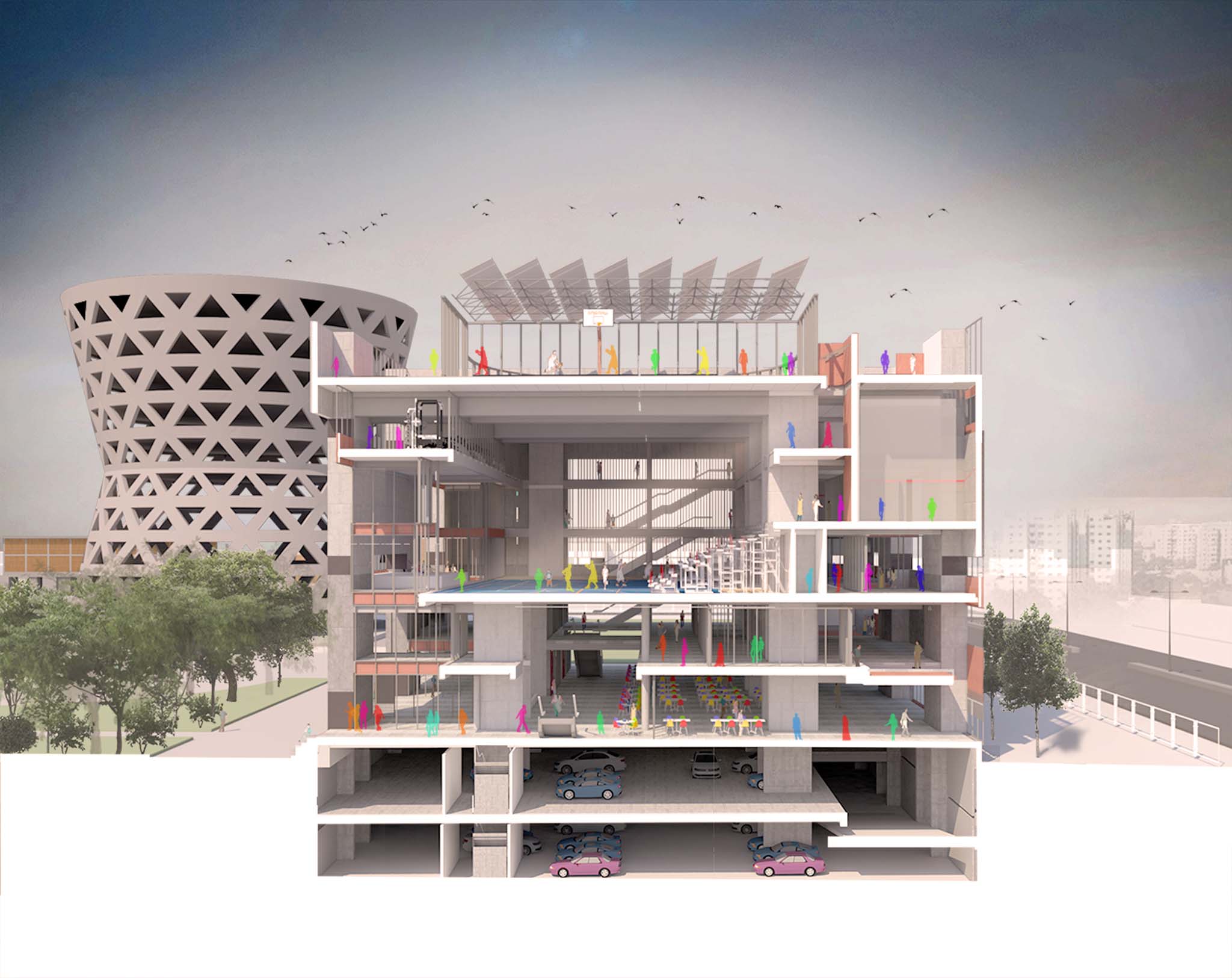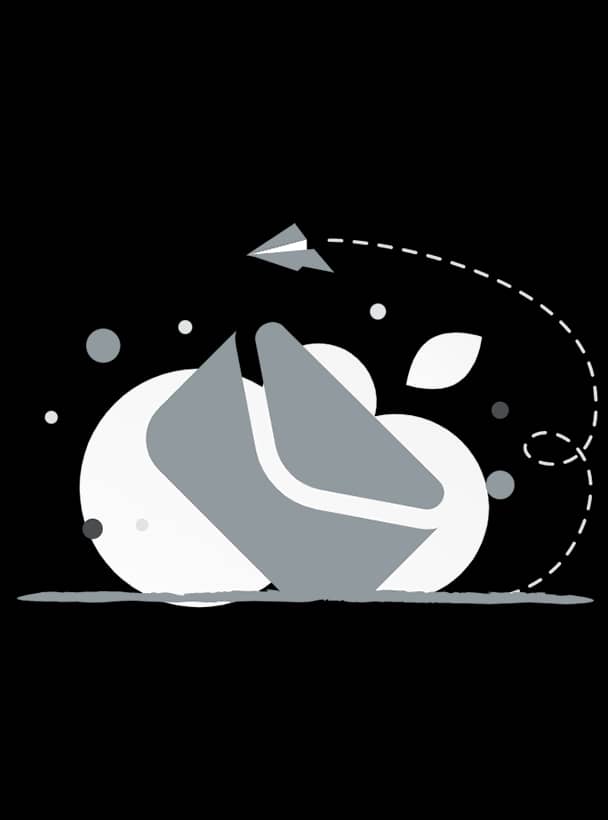Project Credits & Specs
- Architects: Stephane Paumier Architects
- Photographs: Amit Pasricha, Umang Shah
- Location: Ahmedabad, India
- Area: 20 880 m2
- Year: 2022
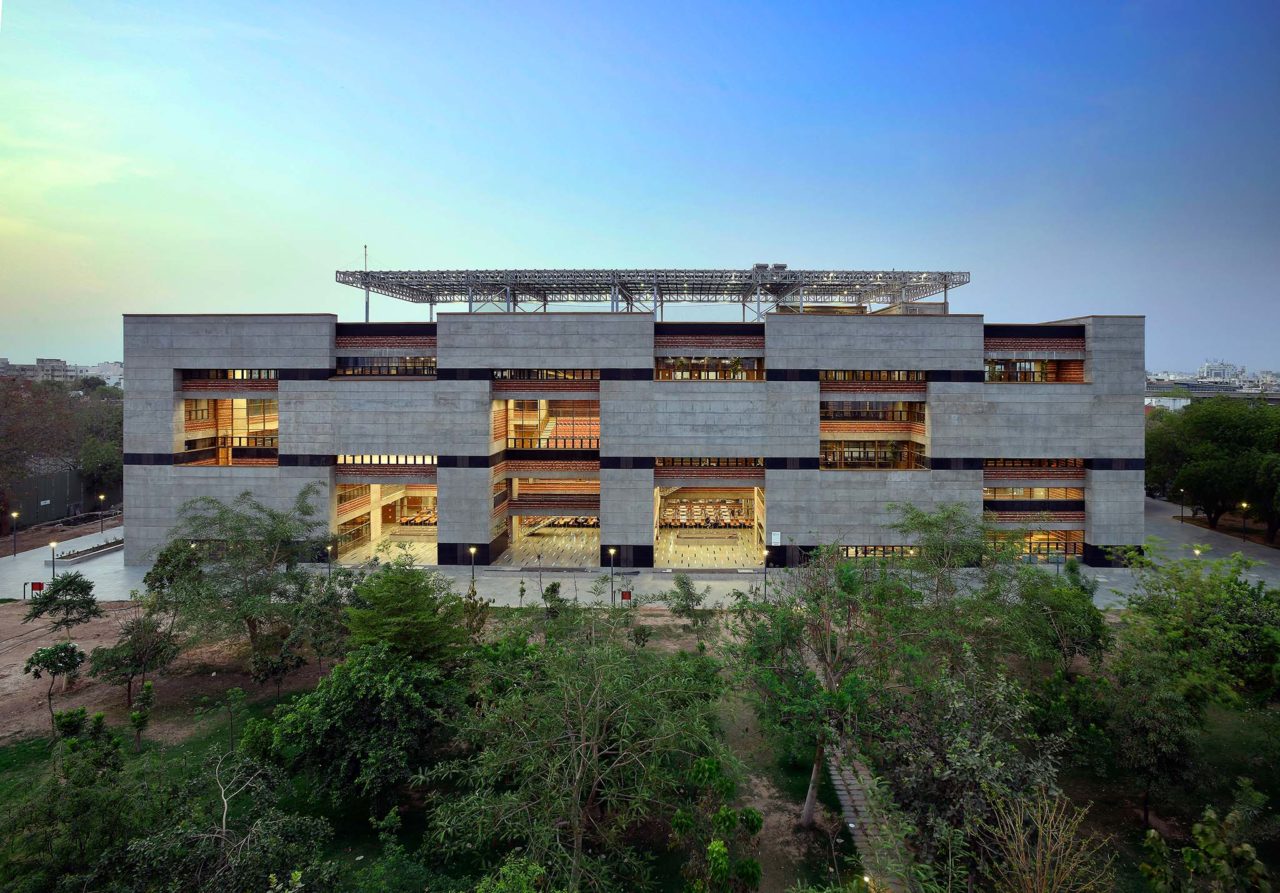
Project Description
The brief for the Ahmedabad University Centre was created organically with the University Board as a hub for the in-between hours of formal teaching. The aim was to create a center that would become an incubator for academic life and a place for generating new ideas by creating interactive spaces besides formal educational functions. Being located at the vehicular entrance with underground parking, it also acts as a gateway between the city and the pedestrian university campus.

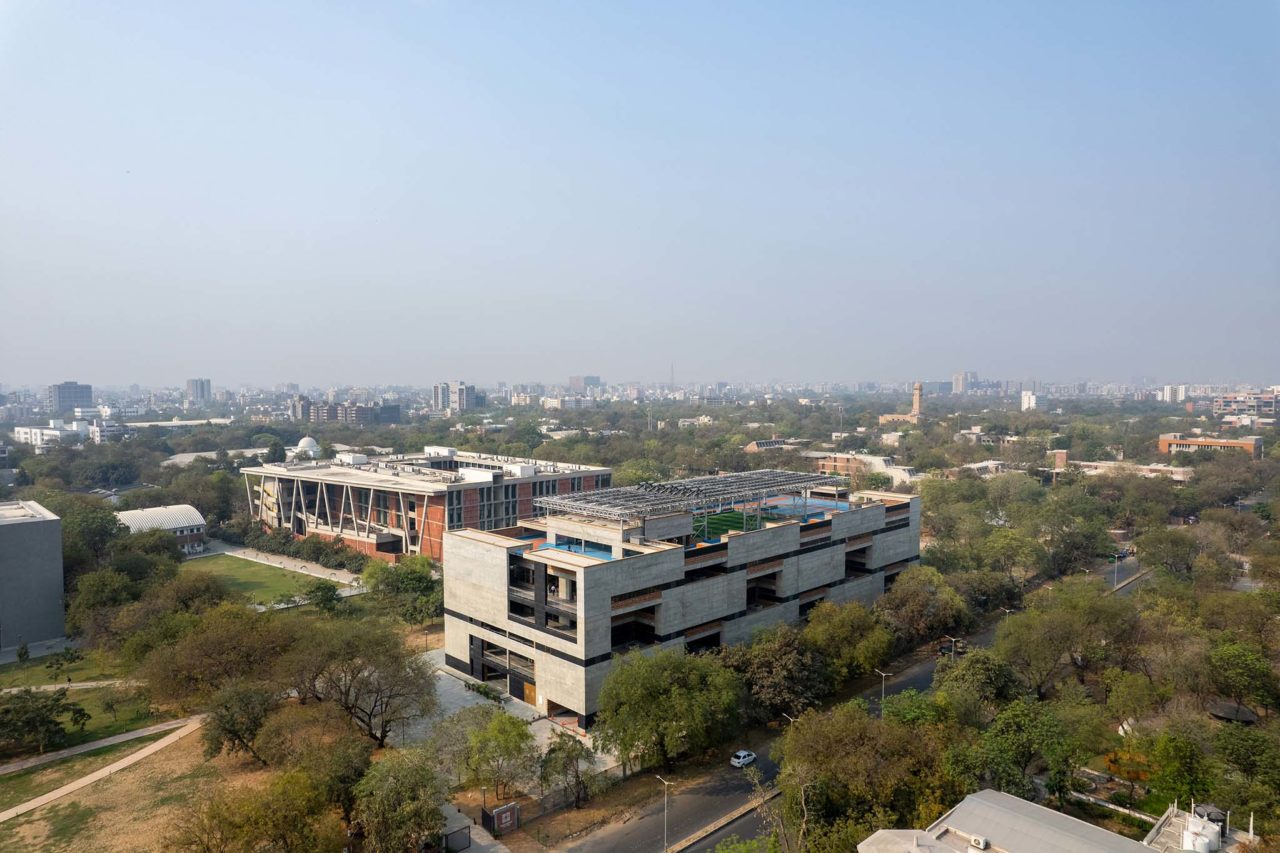
The culture of street food is crucial to the fabric of Ahmedabad and student life, it was essential to design the food court as an extension of the street, leading to a food street at ground level. Inspired by the exciting bridge, Galata Koprusu, that links Galata to Eminonu in Istanbul and has a string of restaurants below and views on the Golden Horn, the three verandahs opening to the park can also be used for music performances while sitting under the trees.


The 1st floor is an extension of the covered street with multipurpose rooms and clubs/activity rooms, immediately accessible from the ground level. The large multipurpose hall on the 2nd floor has a permanent stage for performance-oriented activities such as cinema, theatre, dance, conferences, and music. The seating comprises telescopic sliding bleachers that are otherwise stacked vertically on the wall to create an indoor open space to encourage sports such as basketball, TT, volleyball, and badminton.
The University Offices are located In the East wing on the 2nd floor, overlooking the central cut-outs and the exterior through verandahs. The 3rd floor is almost exclusively the faculty club and café that takes the entire East wing with a peripheral covered verandah facing the central park and the morning sun. On the 4th floor are the quiet reading space and the Career Development Cell. The roof is dedicated to a running track and a 6×6 futsal court.
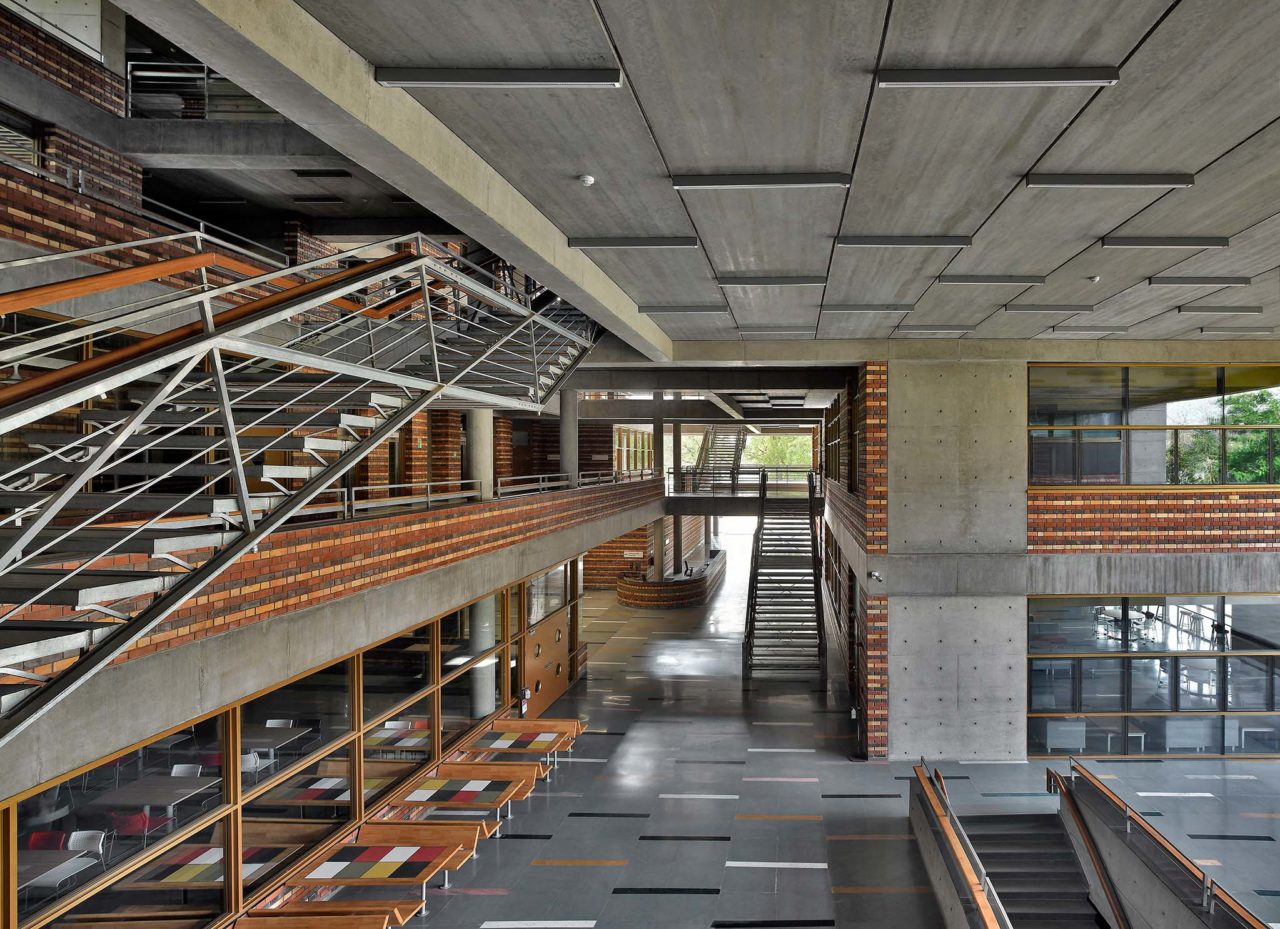


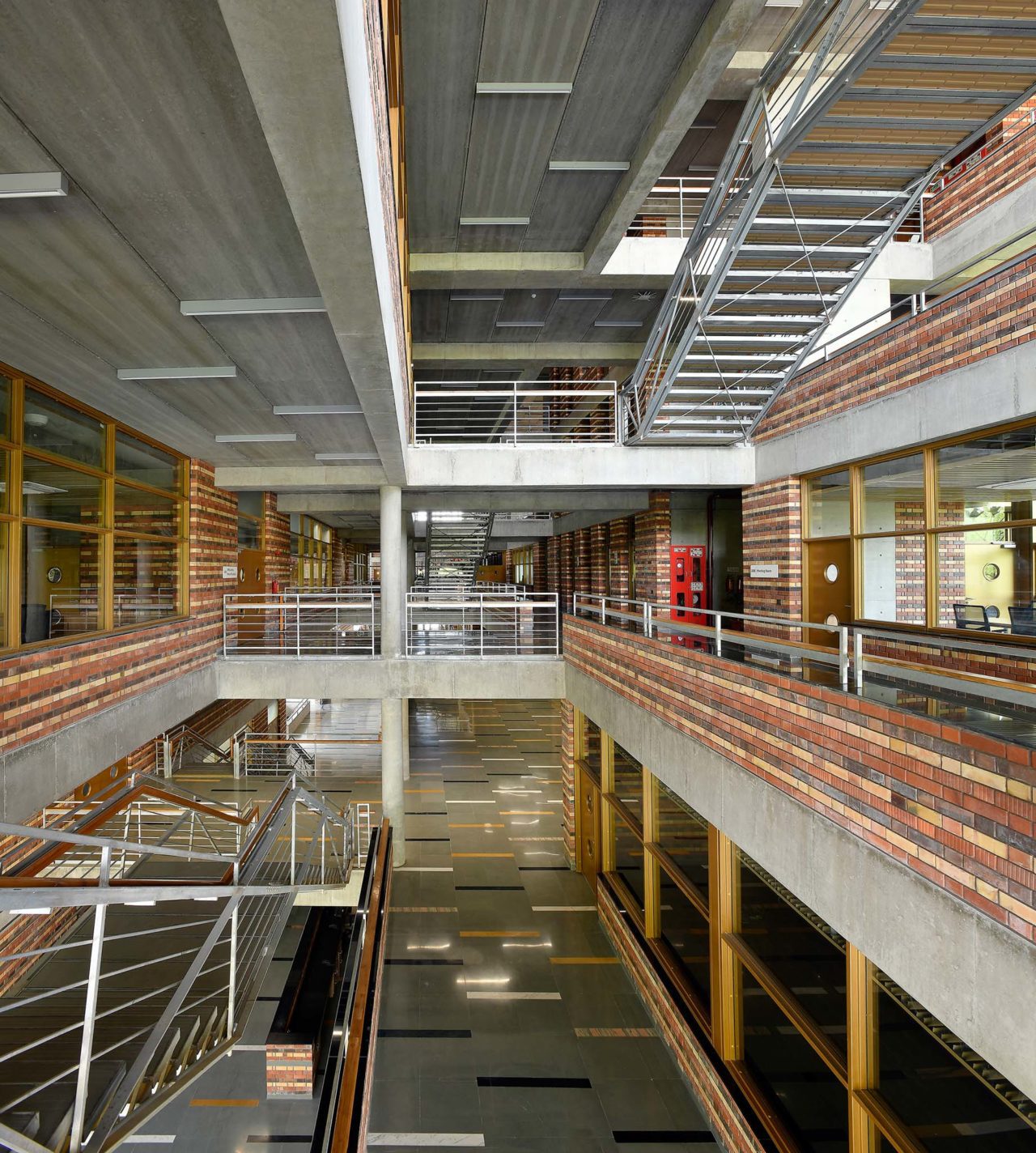
The large footprint of the University Centre, 96m x 36m, was a specific challenge to bring natural light and ventilation inside its core. We worked with 3D models and visualization tools to ensure adequate lighting by staggering the floors and allowing the natural light to flow down from the top and bounce up from the South-facing verandahs. As a result, the natural light crosses the building diagonally.
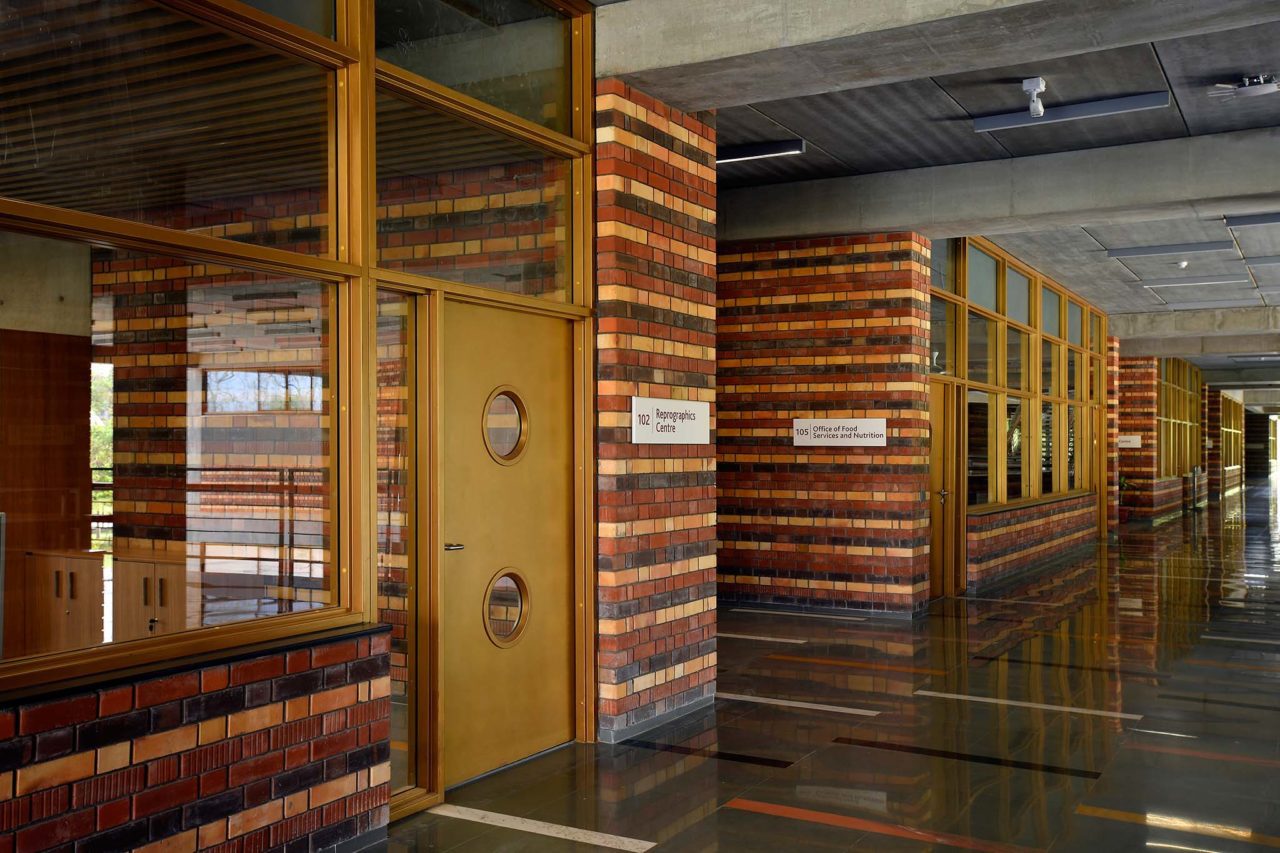



The staggering of floors makes the building appear much larger than it is, with the students able to spot each other from different floors. On certain specific days (May 1, International Workers Day, and August 15, India’s Independence Day) a direct ray of light comes diagonally at sunrise from the top of the East façade to hit the ground floor.



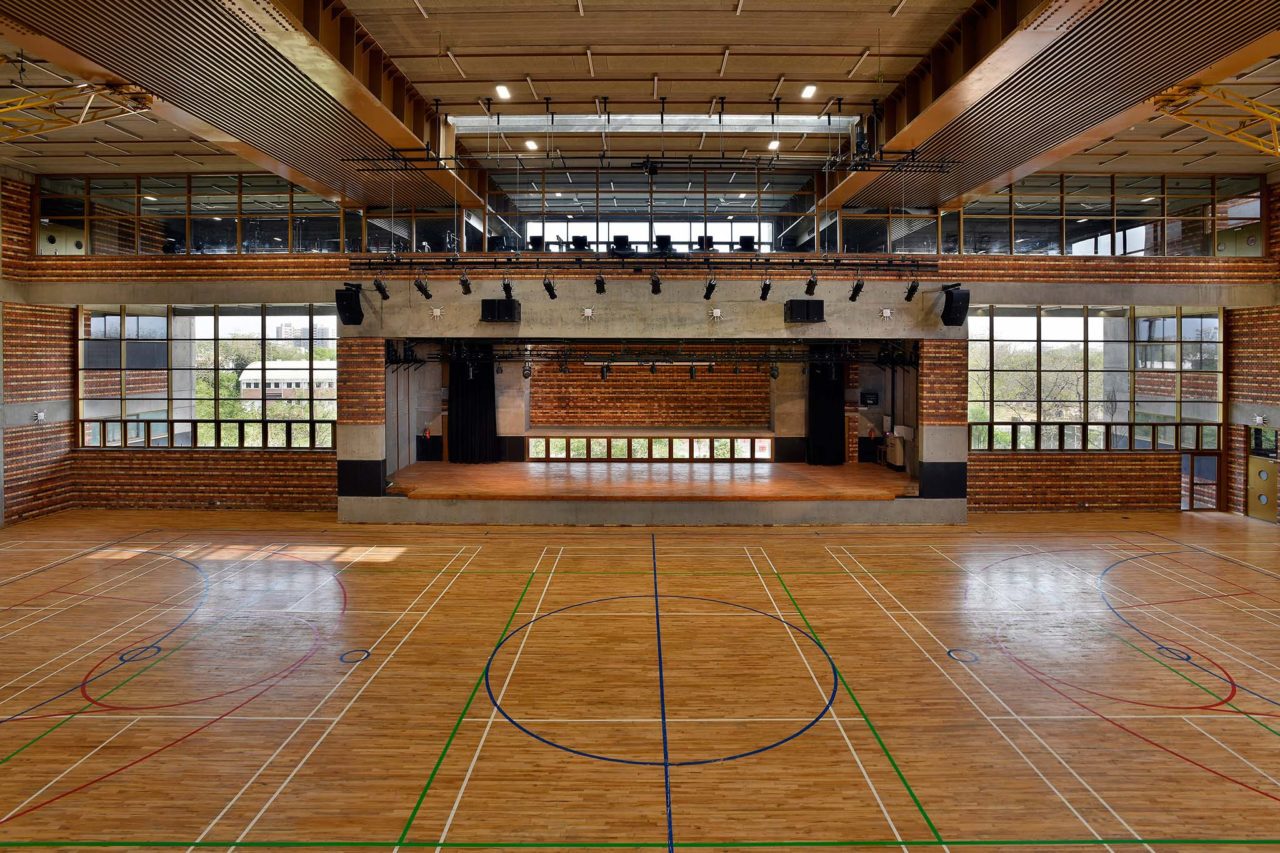
This is the first building in Ahmedabad to use concrete precast technology in its structure at a large scale with the help of factory-fabricated hollow core slabs using thin strands (12.7mm diameter) instead of conventional reinforcement. The walls and beams are in-situ concrete, while the slabs are all prefabricated. The MEP systems have been designed for efficient reuse of water. The building gathers the sewage water from the other buildings on the campus in addition to its grey water. It recycles it for different purposes: irrigation, flushing of toilets, and cooling tower make-up water.

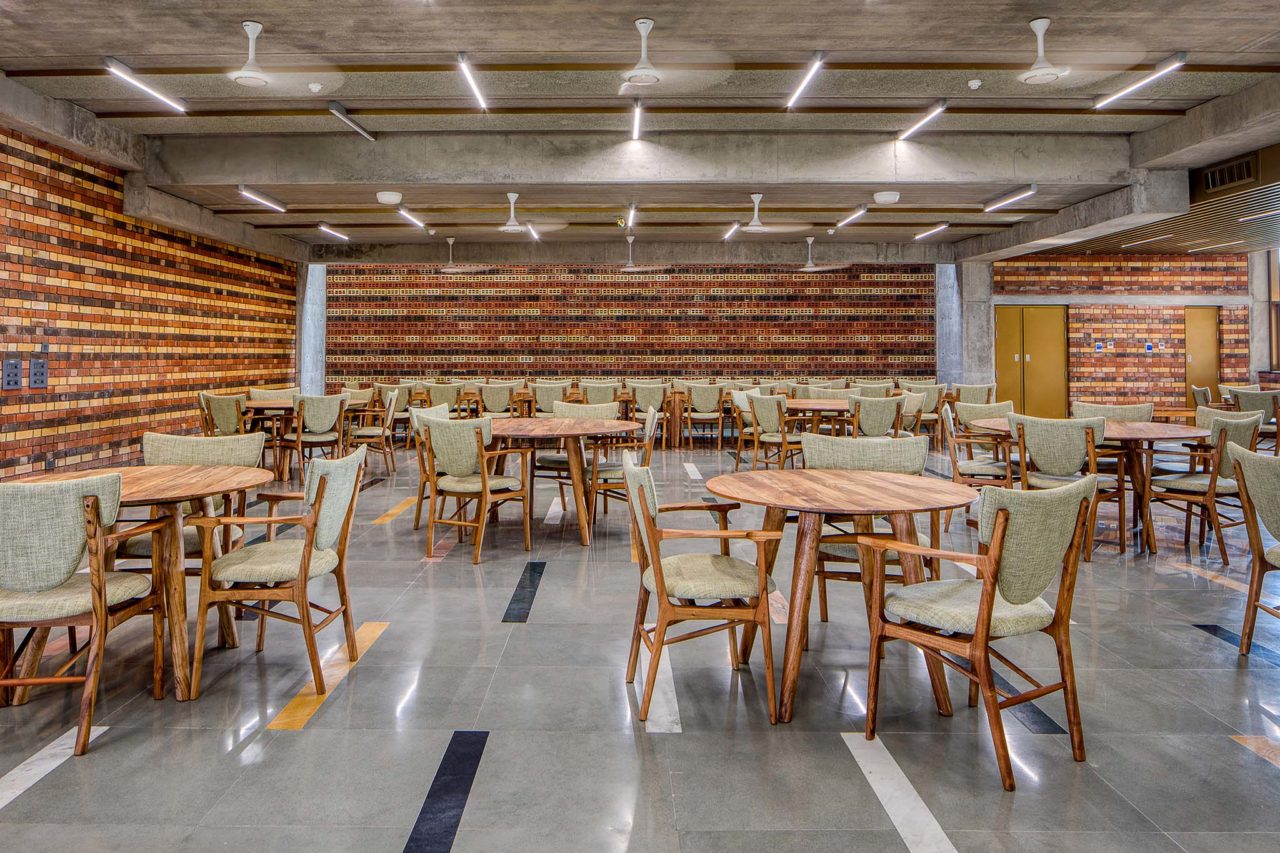
The sewage treatment plant is located in the second basement and will be able to maintain the entire irrigation of the central forest. The futsal court on the rooftop is covered by a solar roof dedicated to energy generation with 450 solar panels generating 140 KW of solar light used directly for fans, light, and power sockets during the day. The openings on the façades are all recessed from the façade wall and open on deep verandahs to avoid direct glare on the glass and unnecessary blinds and curtains. As a result, this building is LEED Platinum certified.



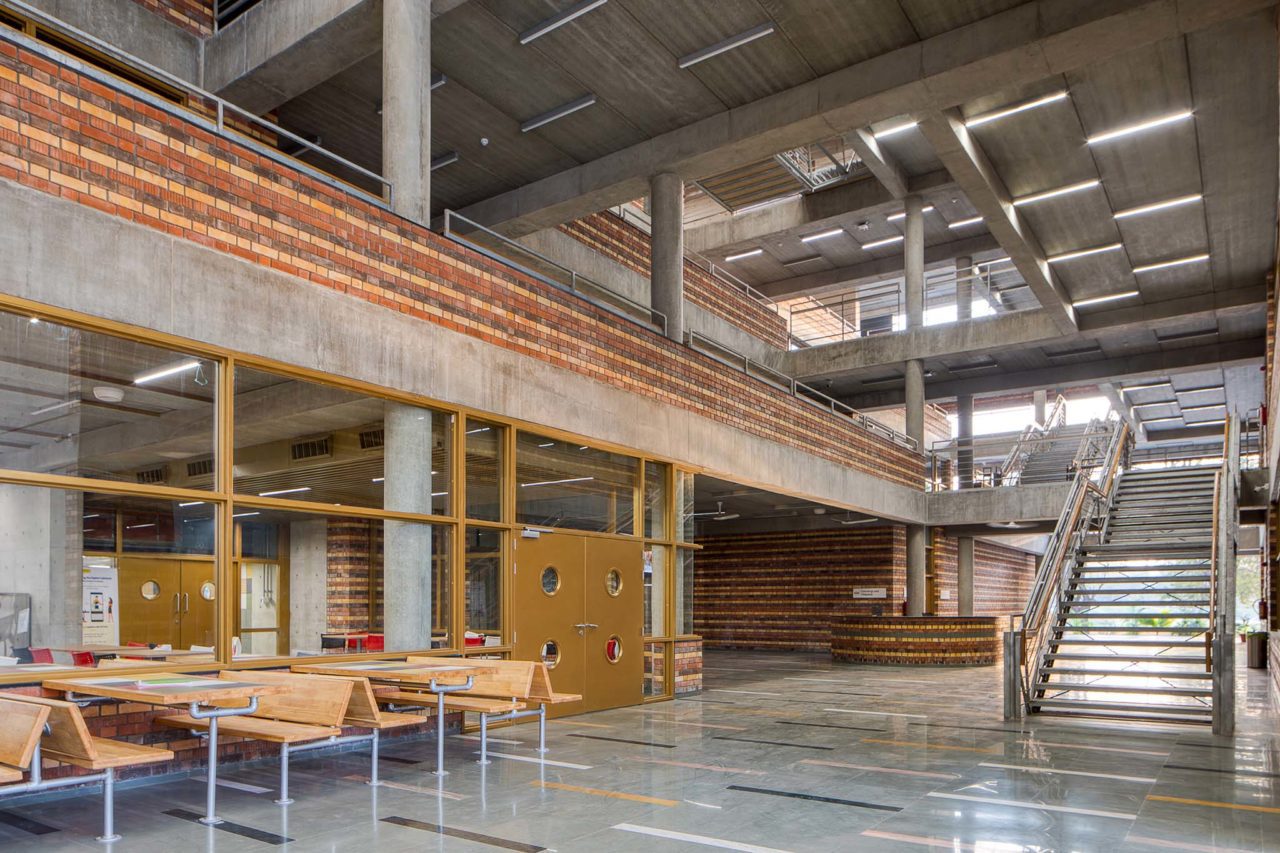
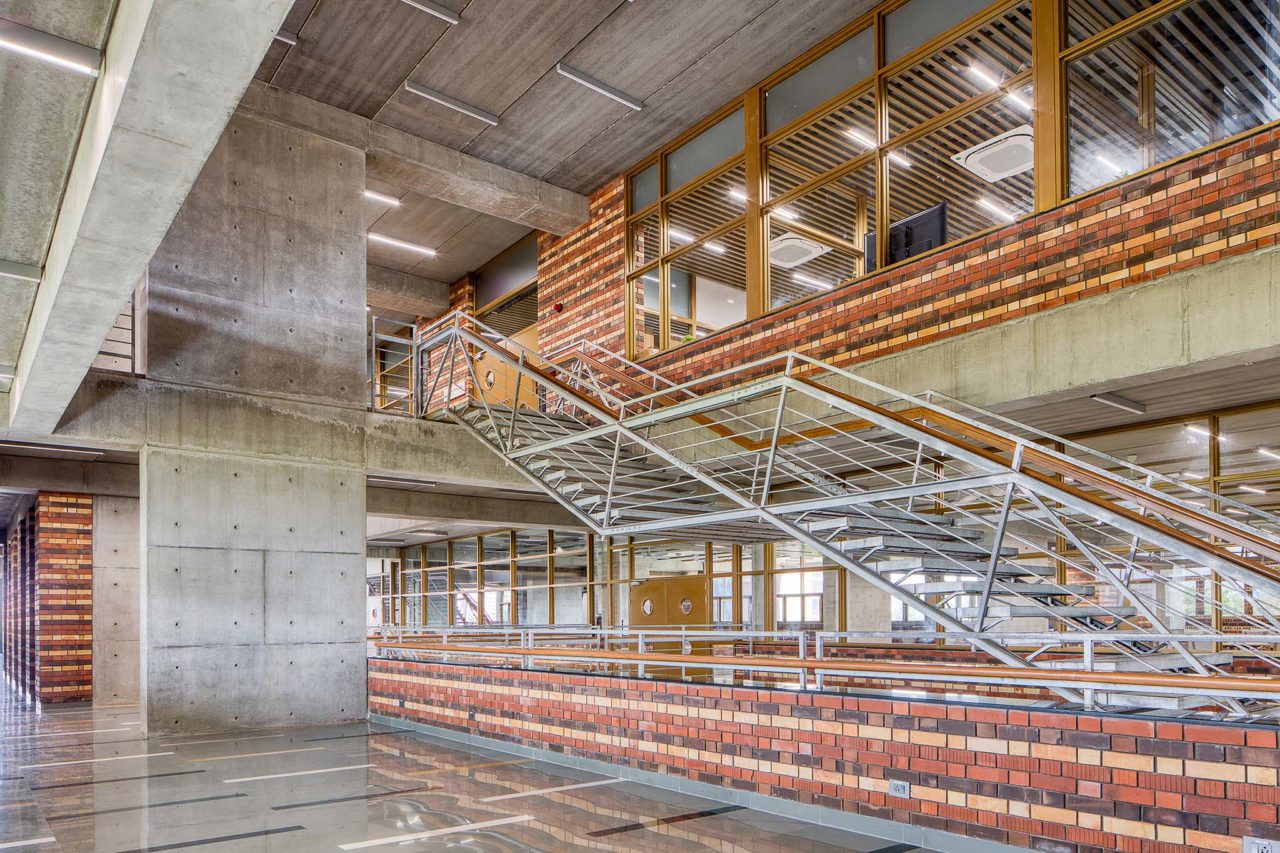
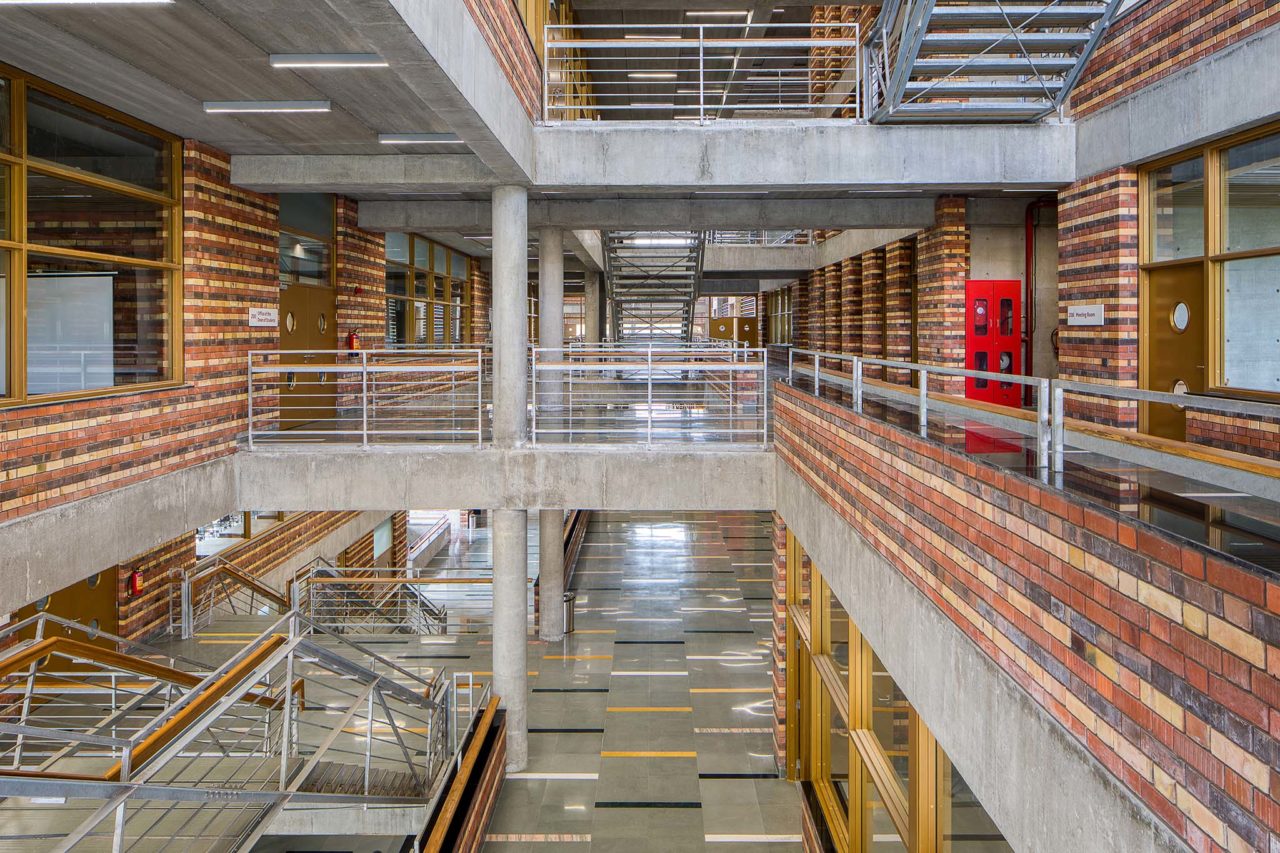


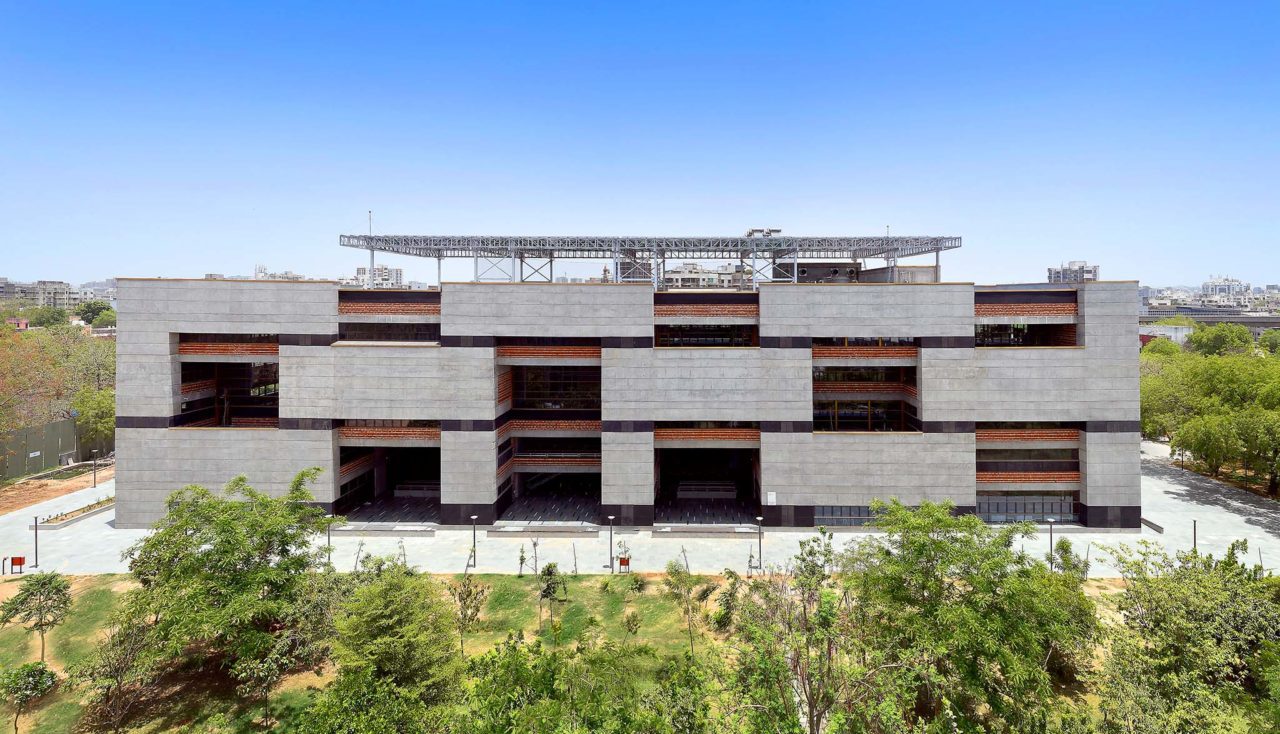
The project description is provided by the architects.
About the Architects

SPA Design Pvt. Ltd. was founded in 2005 by Stephane Paumier as a principal, with Anupam Bansal and Krishnachandran Balakrishnan as co-directors. Making projects entails long studies of the context of the site, the history of the region, and technical knowledge for the physical realization of desires, forms, and spaces. It is the process of going through all these essentials systematically and bringing an order which helps develop each project individually and tends to its needs. The organization explores all the opportunities that come with a site and the program to ascertain a strong design concept. With each project, new constructional and structural techniques are evolved, and local materials are discovered and worked upon. The structure being the most important of any project is always dealt with high sensitivity.
